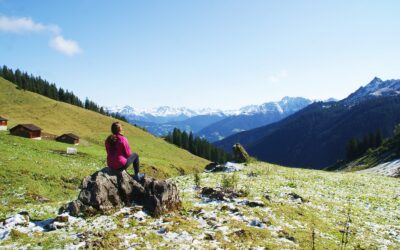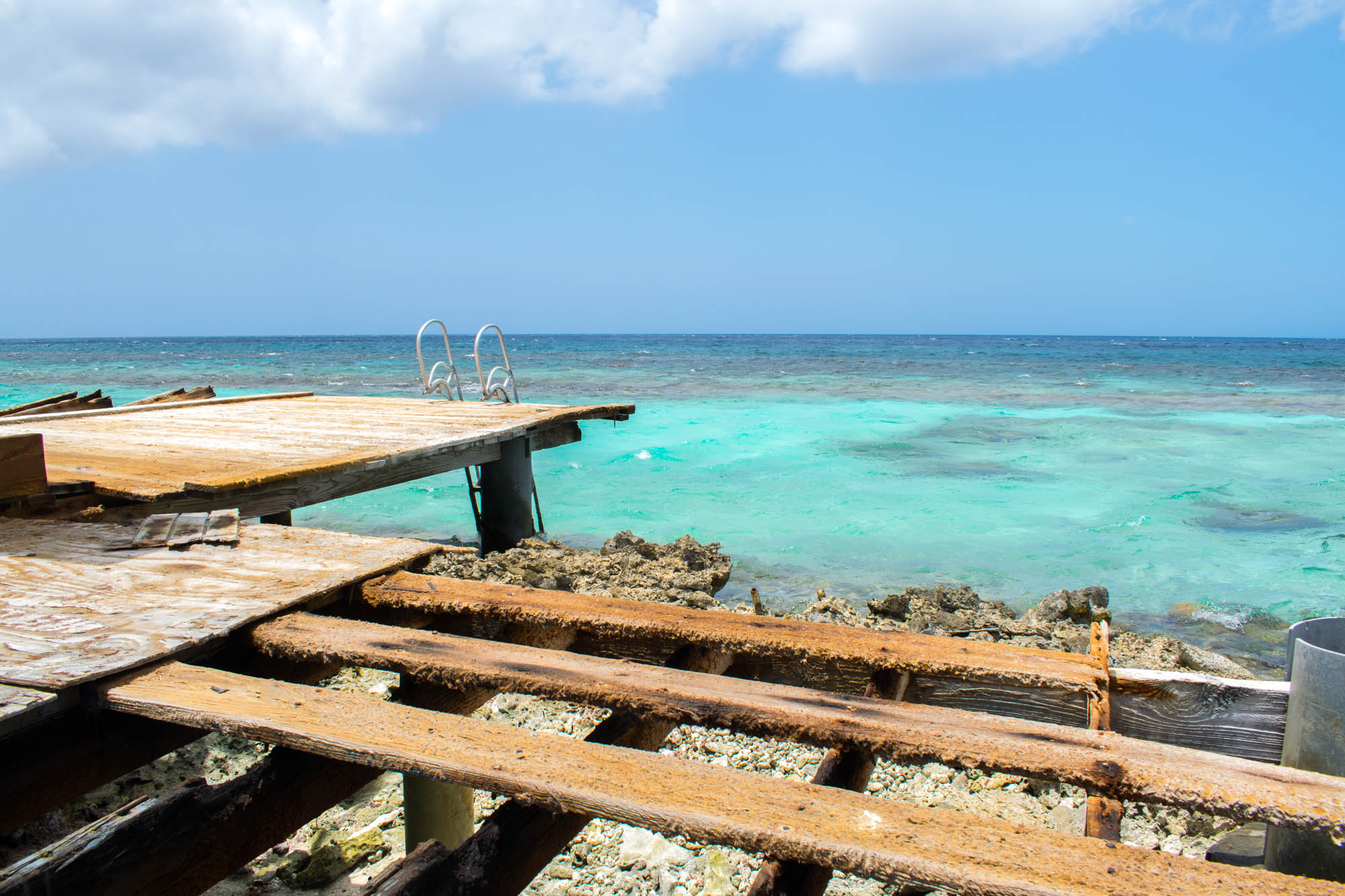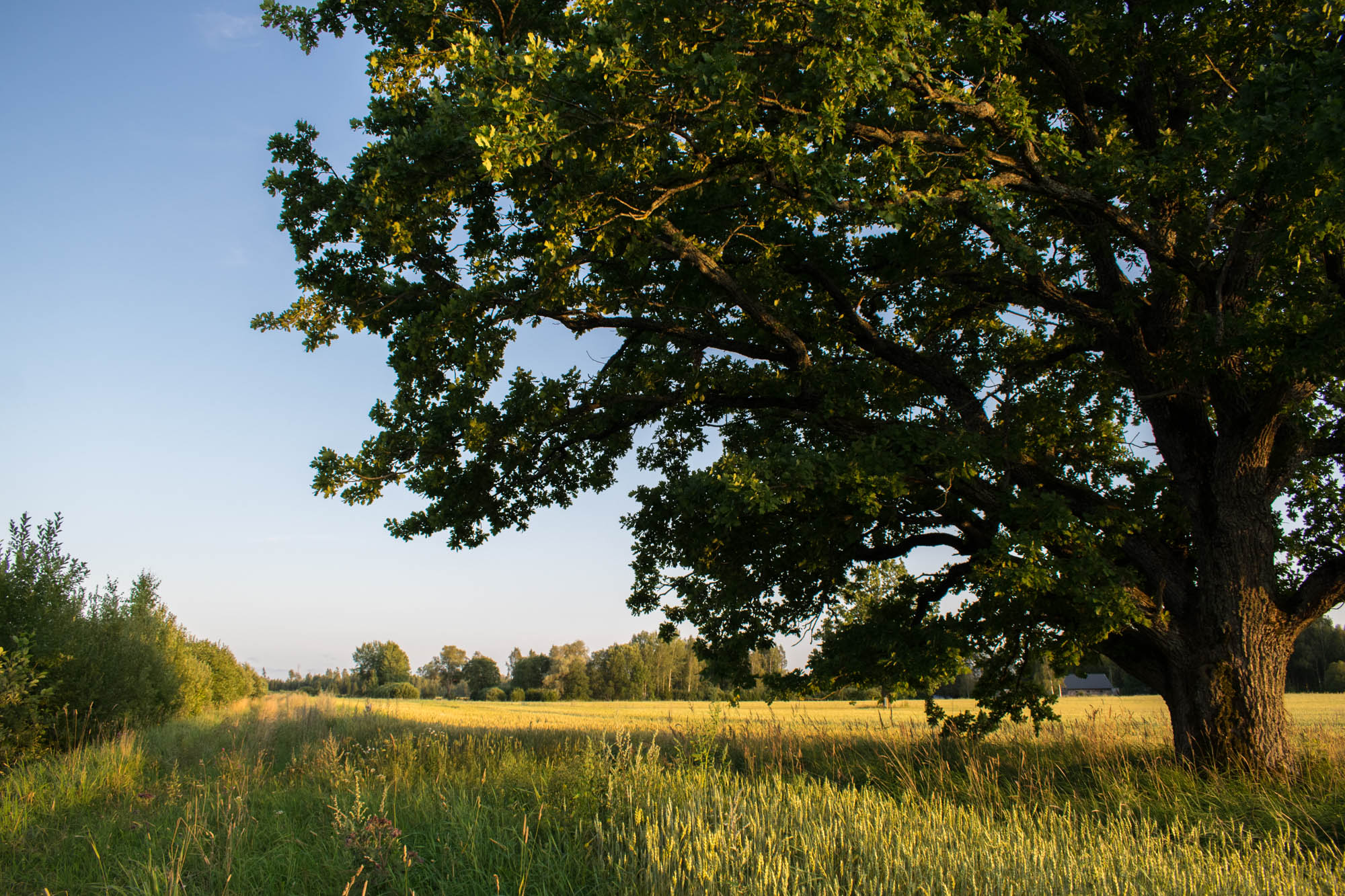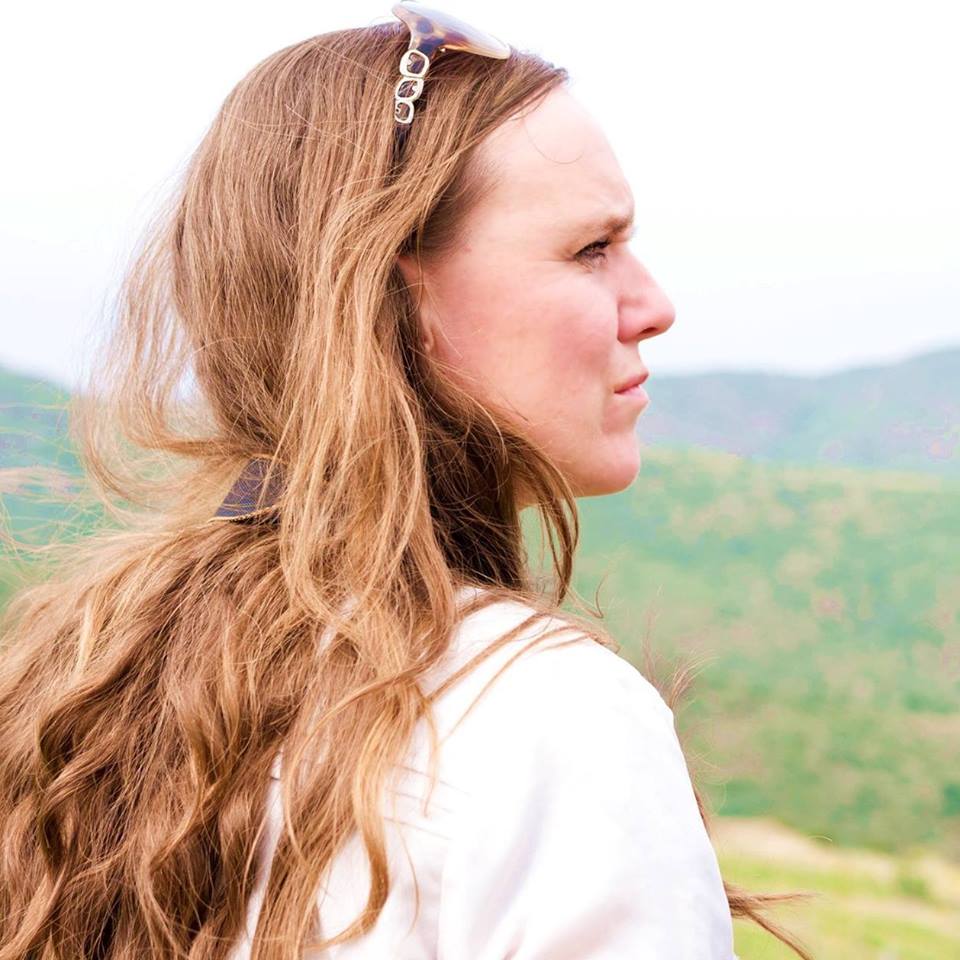Hiking in Arikok National Park, Aruba
A thin layer of clouds provides much needed cover from the baking sun. Around me, there is nothing but desert as my path snakes its way past cacti, sand and large boulders here in Arikok National Park in Aruba.
The silence is everywhere. The only thing I can hear is the sound of our boots as they hit the dry ground below us, followed by a small lizard making his escape as we pass the spot he had chosen for his day-time nap.
Promotinal collaboration
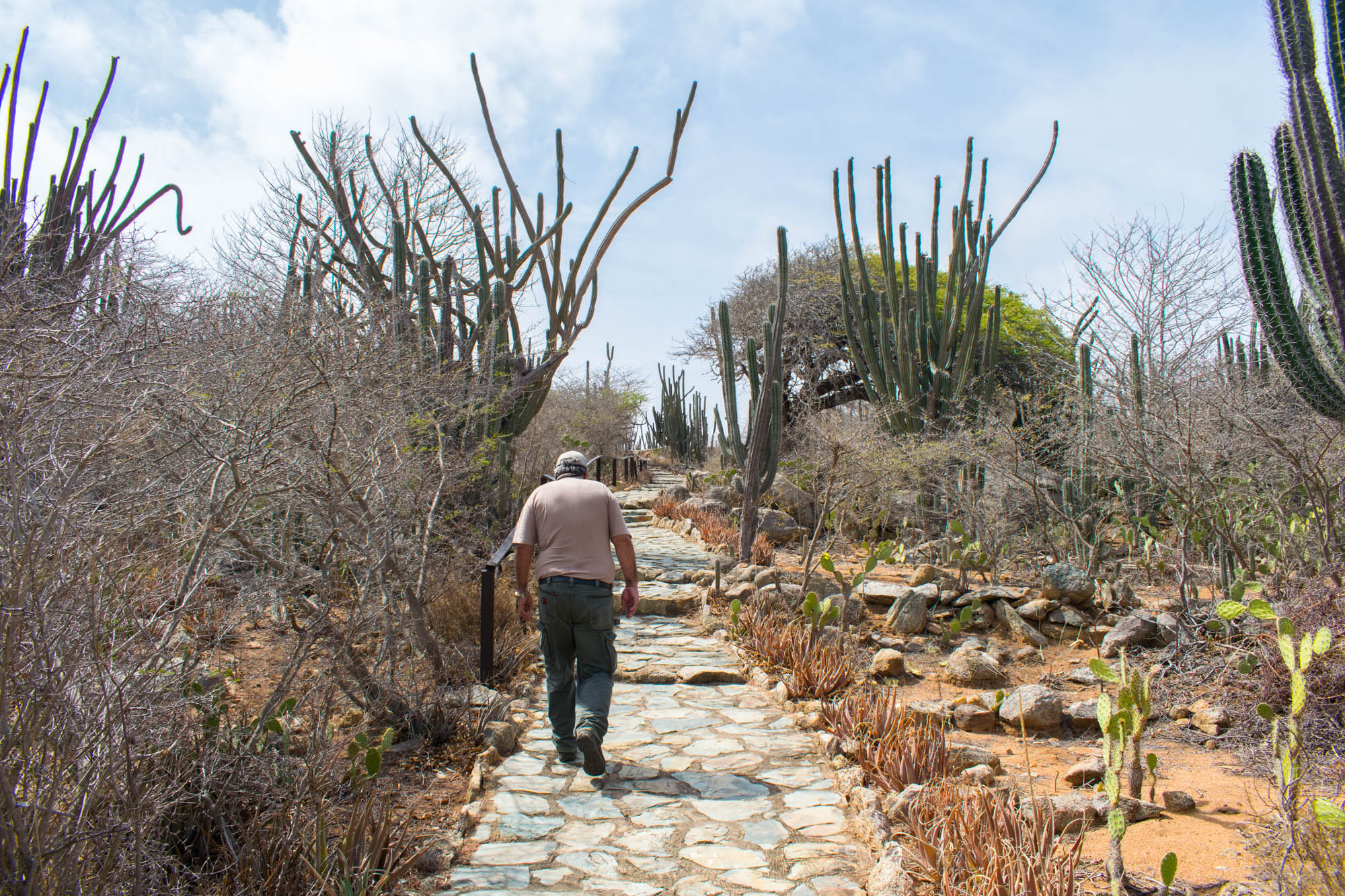
Culture, Nature and History in Cunucu Arikok
I’m on a hike with a local guide from Arikok National Park, and he has promised to take me to some of the most important cultural and historic sites in the area, which is known as Cunucu Arikok. The trail he has chosen takes approximately two hours to complete, and it will take me through the very distinctive landscape on the island.
I’m wearing hiking boots, but the trail is relatively easy to walk and it changes between sandy paths and small trails bounded by stones. Small signs, carefully planted along the path, tell us everything we need to know about the plants we see. It’s amazing to walk past all the different types of cacti and prickly trees, which startlingly enough sport vibrant green colours – a stark contrast to the arid desert landscape.
We also come across colourful flowers and cacti fruits. On a cactus I even spot something bright pink! My guide explains that this pink fruit is very rare in this area, as the local lizards love them and eat them as soon as they are ripe. I feel like a child in a candy store as I put one of the rare berries in my mouth. It tastes just as sweet as it looks, and I can see why the lizards love it!
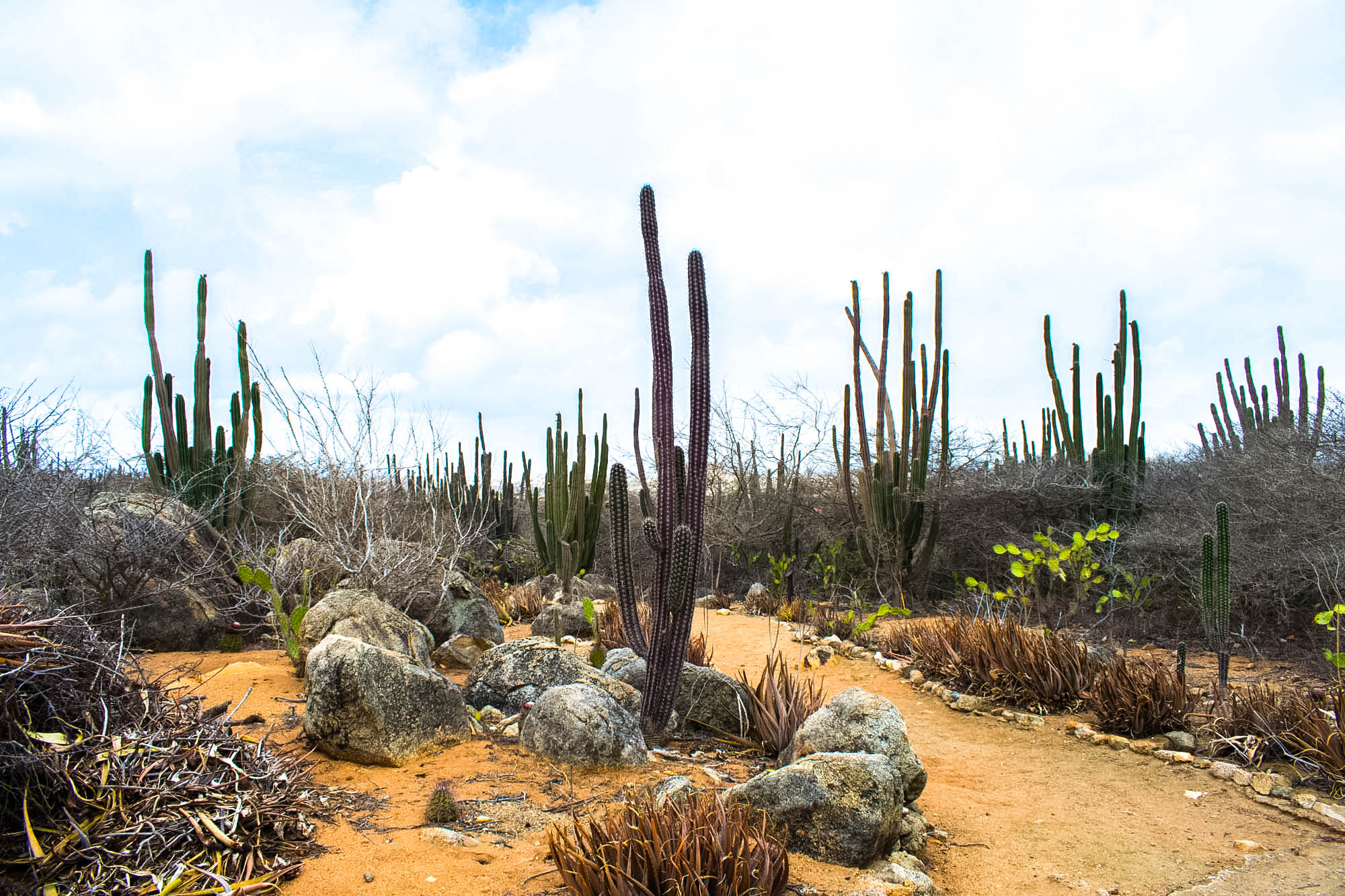
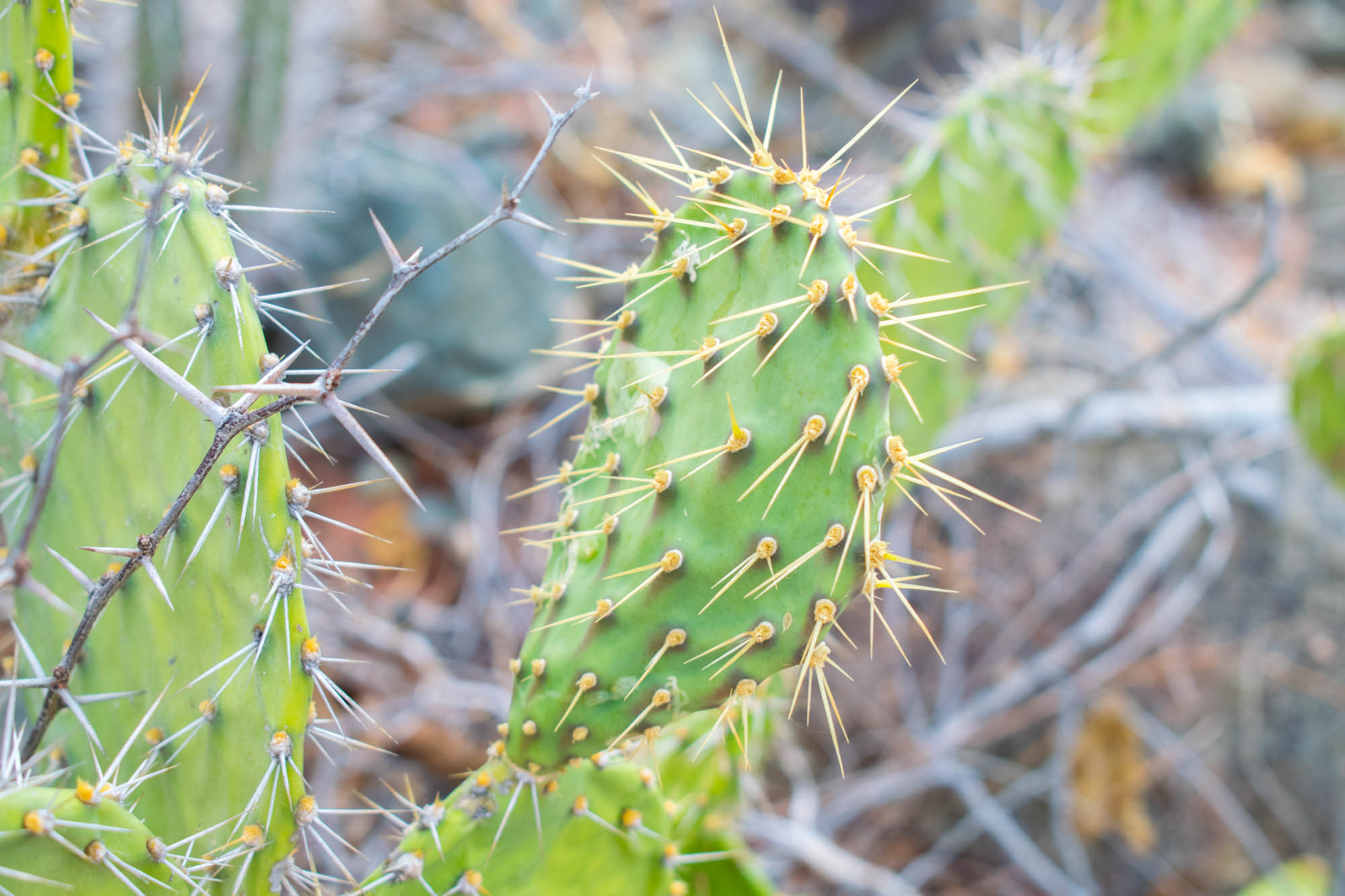
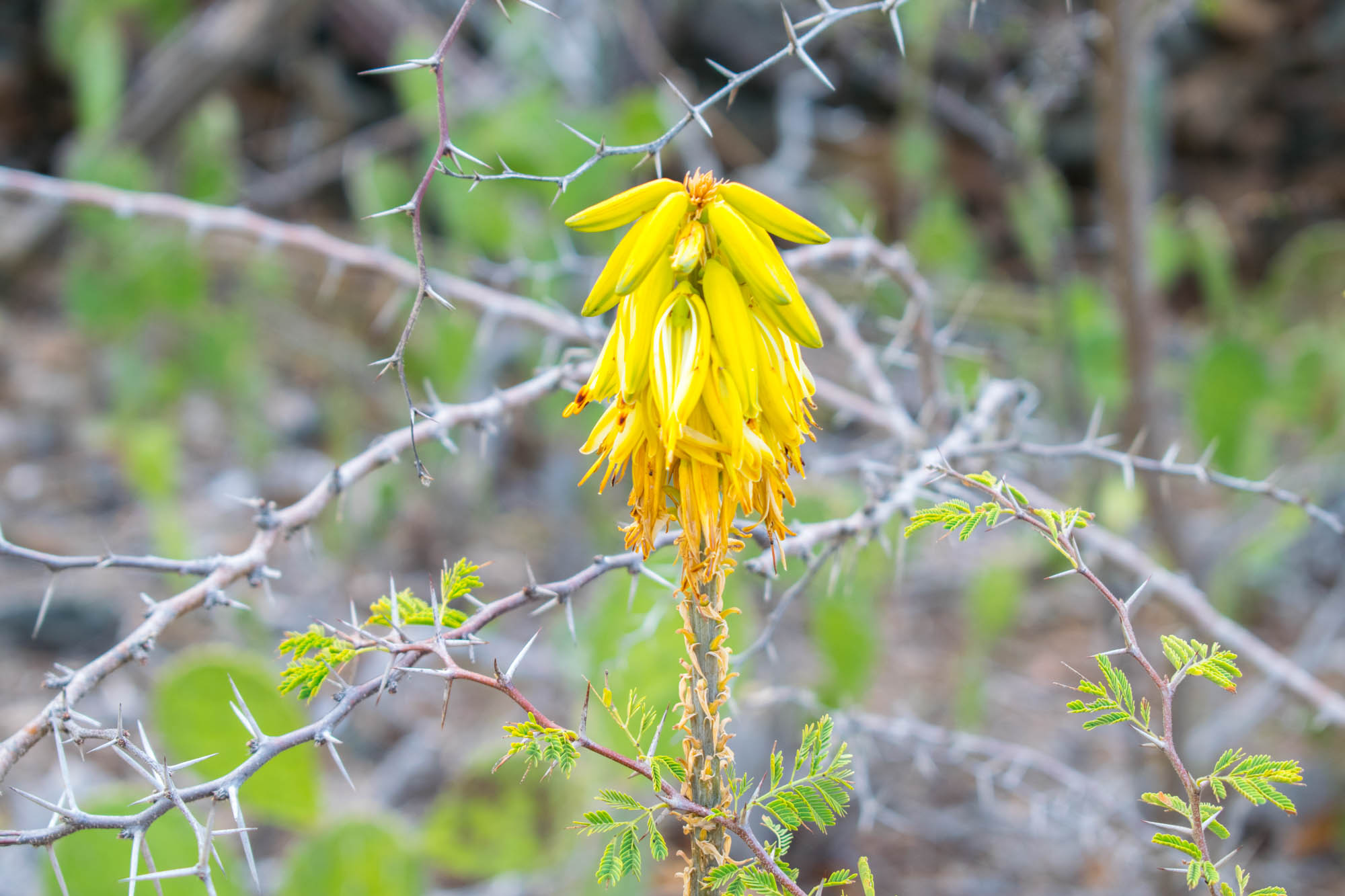
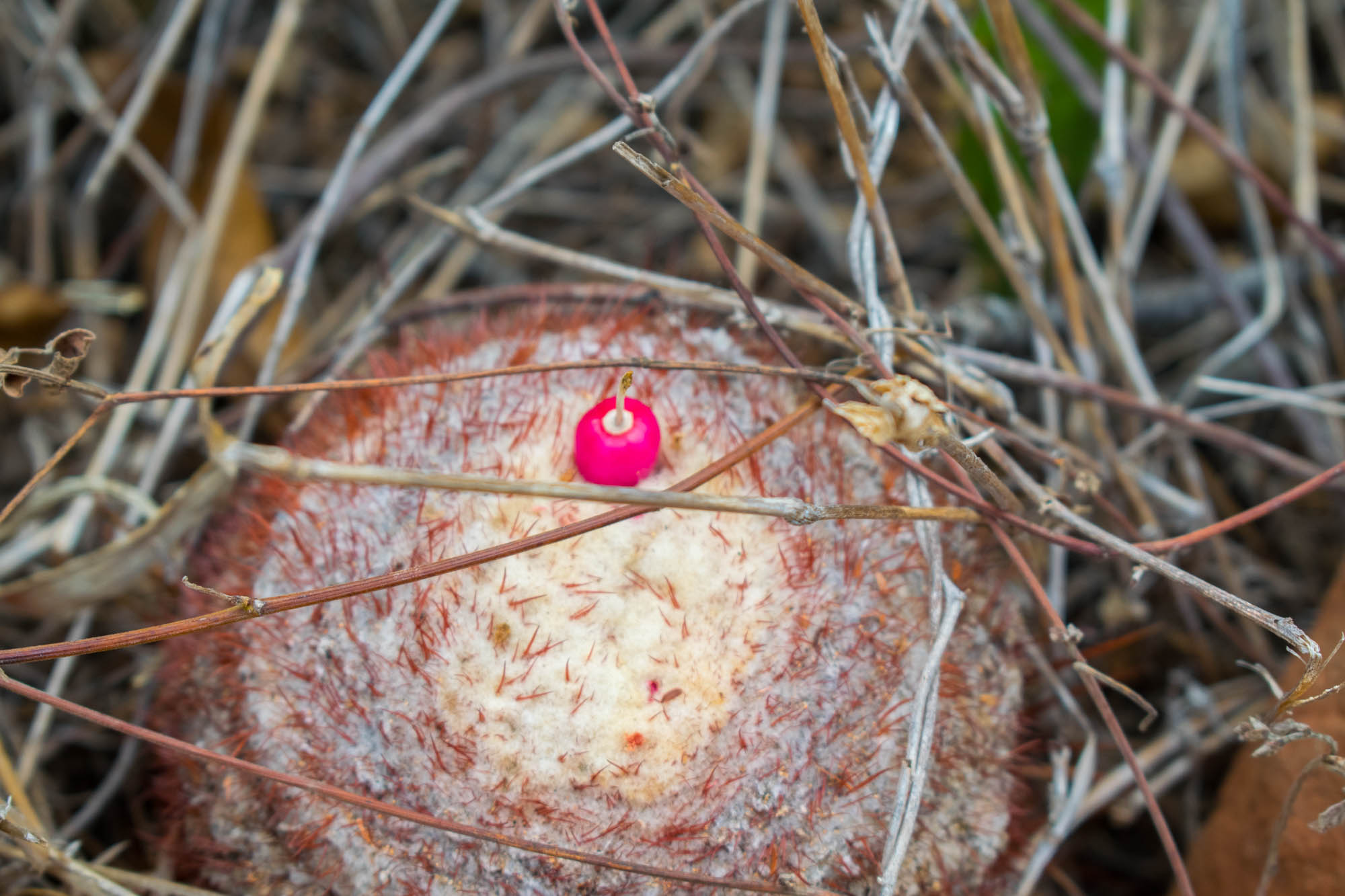
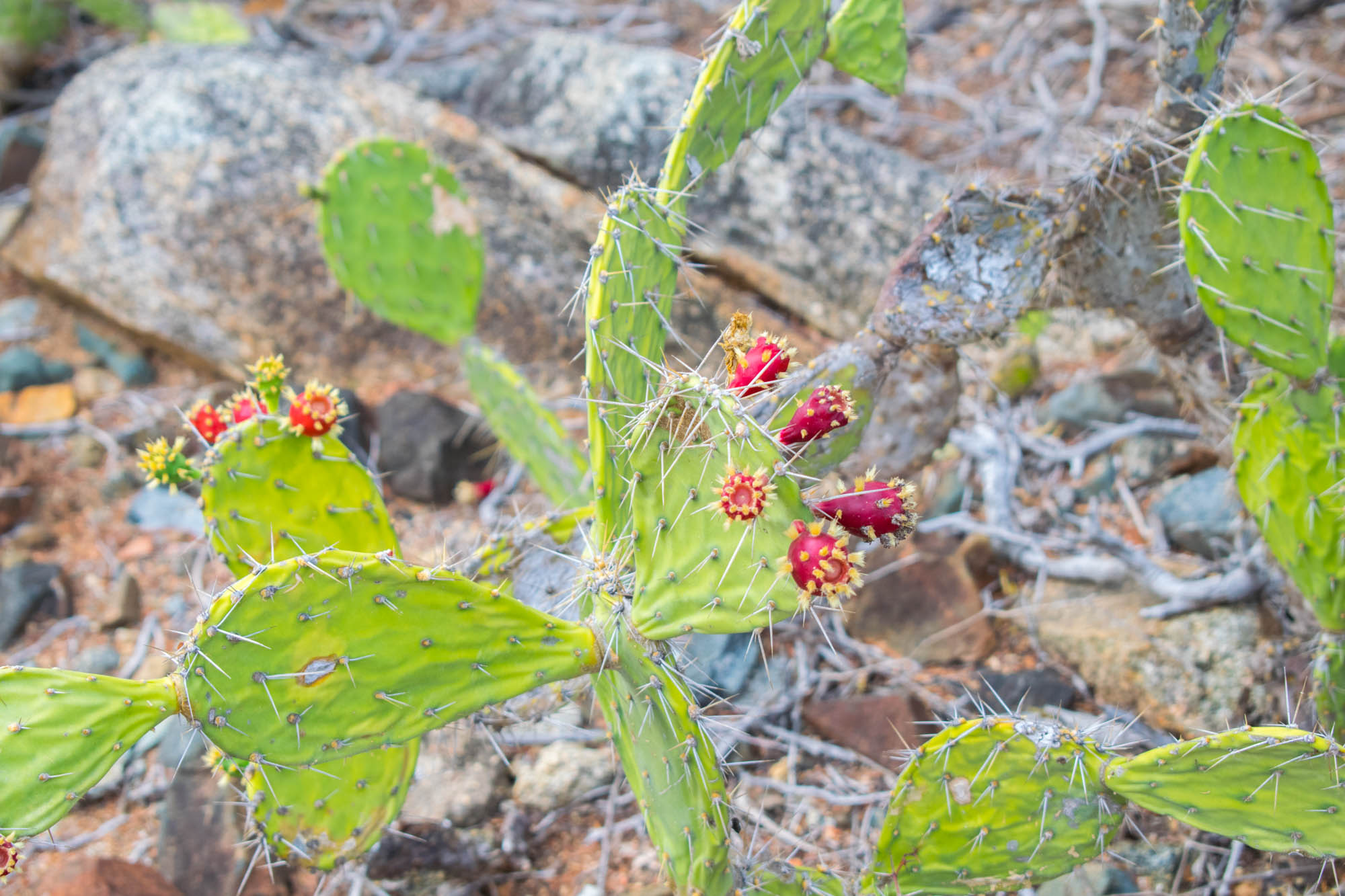
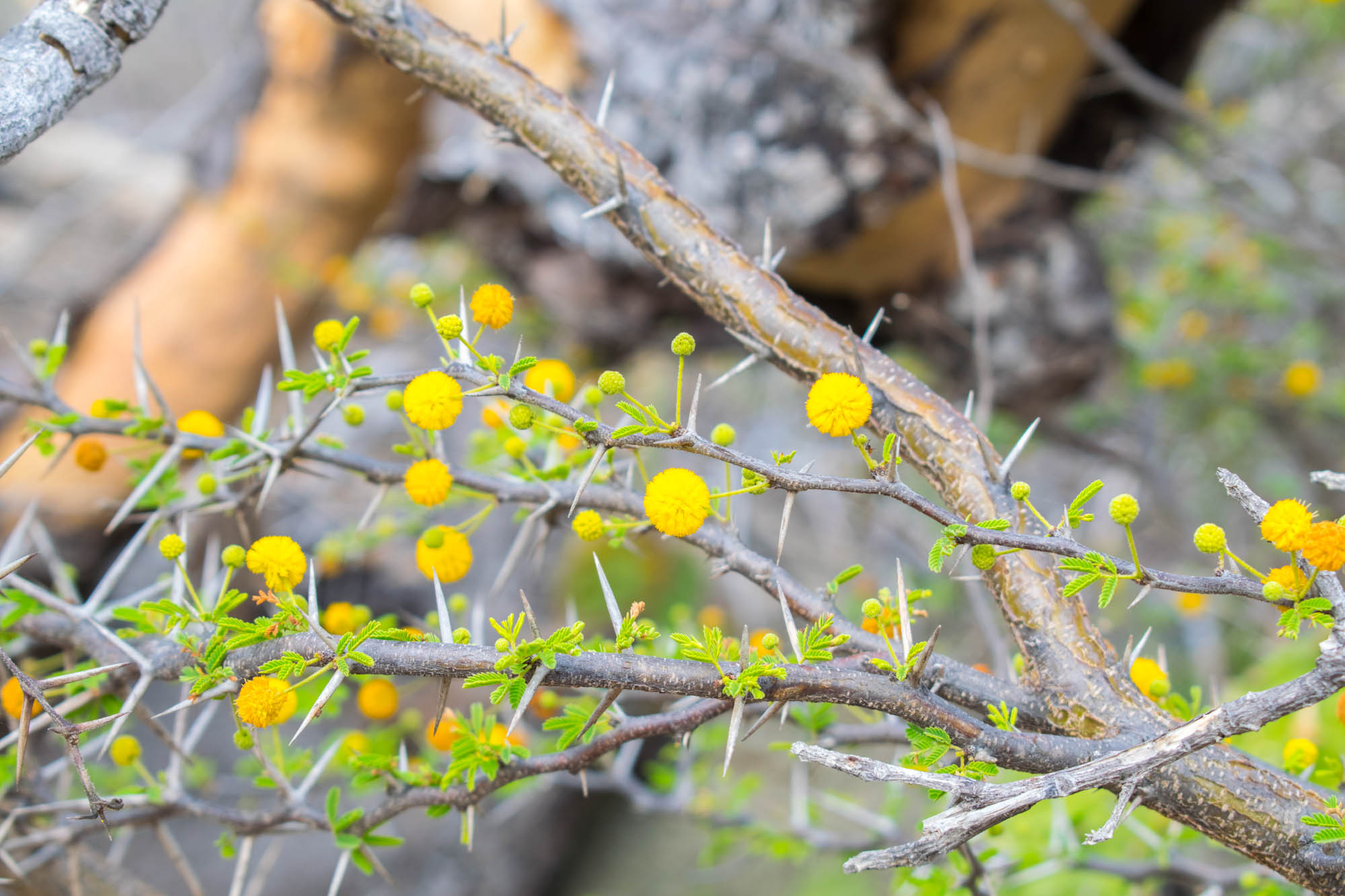
The Uniqueness of the Aruban Aloe Vera Plant
During the hike, I quickly spot the famous Aloe Vera plant. Although, here on Aruba, the leaves seems to be a much darker shade of green than what I’m used to. My guide explains that the Aloe Vera grown on Aruba is highly unique, and that it’s supposedly more effective than the other varieties of the plant. The dry climate of Aruba makes the plant grow much slower, and the lack of colour makes the leaves darker. With less water, the healing properties of the Aloe Vera gel becomes more concentrated, and thereby more effective.
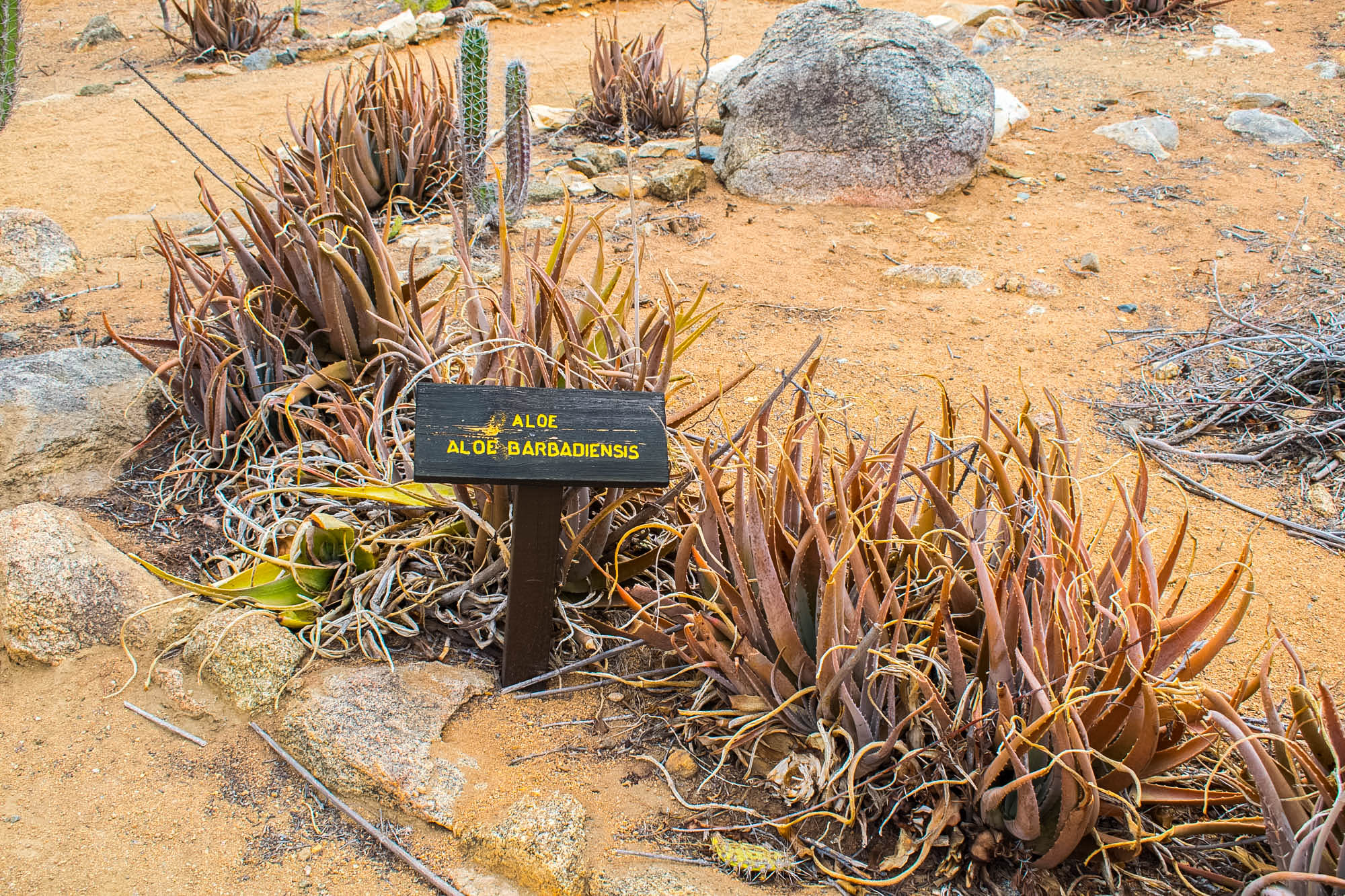
The Arikok National Park Eco-System
The Arikok National Park covers approximately 20% of the island, and the landscape mostly consists of three different geological formations: lava landscape, chalk formations and quartz diorite.
The park is also the home of diverse animal species, including a large group of bats, plenty of birds, some wild goats and even a few sea turtles.
What they all have in common is that they have learnt how to thrive in the dry climate.
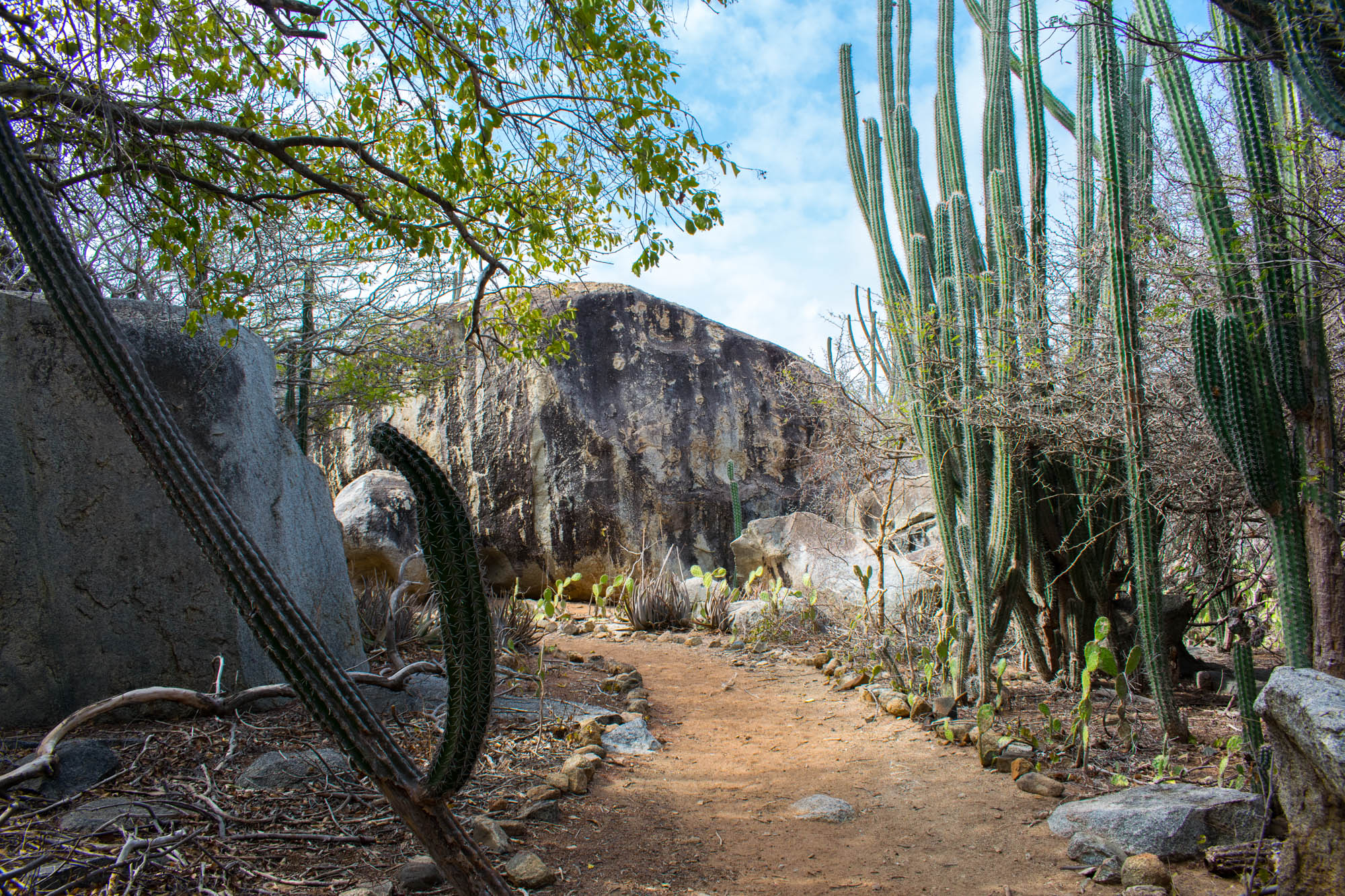
Tracing the European Settlers in Canucu Arikok
The National Park was established in 2000, and it provides a good insight into how the island once looked. You see, before modern civilization reached the island, the landscape was actually the same all over Aruba! Dry, arid and covered in cacti, boulders and sand.
With this knowledge, I can’t help but admire an old house located in Canucu Arikok. This house was originally built by early European settlers! The guide explains that these houses were built with a specific type of clay local to the area, and that the settlers used cacti and stones to put up fences and walls to protect the precious crop they somehow had manage to grow out here in the desert.
The fences were also used to quarantine the animals. As there are plenty of poisonous plants in the area, the animals were kept behind a fence and only fed water and hay the week before the slaughter. This week was sort of a detox for the animals, and it ensured that the meat would be safe for the settlers to eat.
As we were walking around the area, we suddenly heard loud noises from a nearby bush. This time, however, it was more than just a scared lizard – it was a pack of wild goats! Our guide explained that the goats originally belonged to the farms in the area, but that they had either escaped or been left behind over the years. Somehow, they had managed to find a way to survive on their own. What once used to be a small population has now grown to a herd of more than 1,500 wild goats.
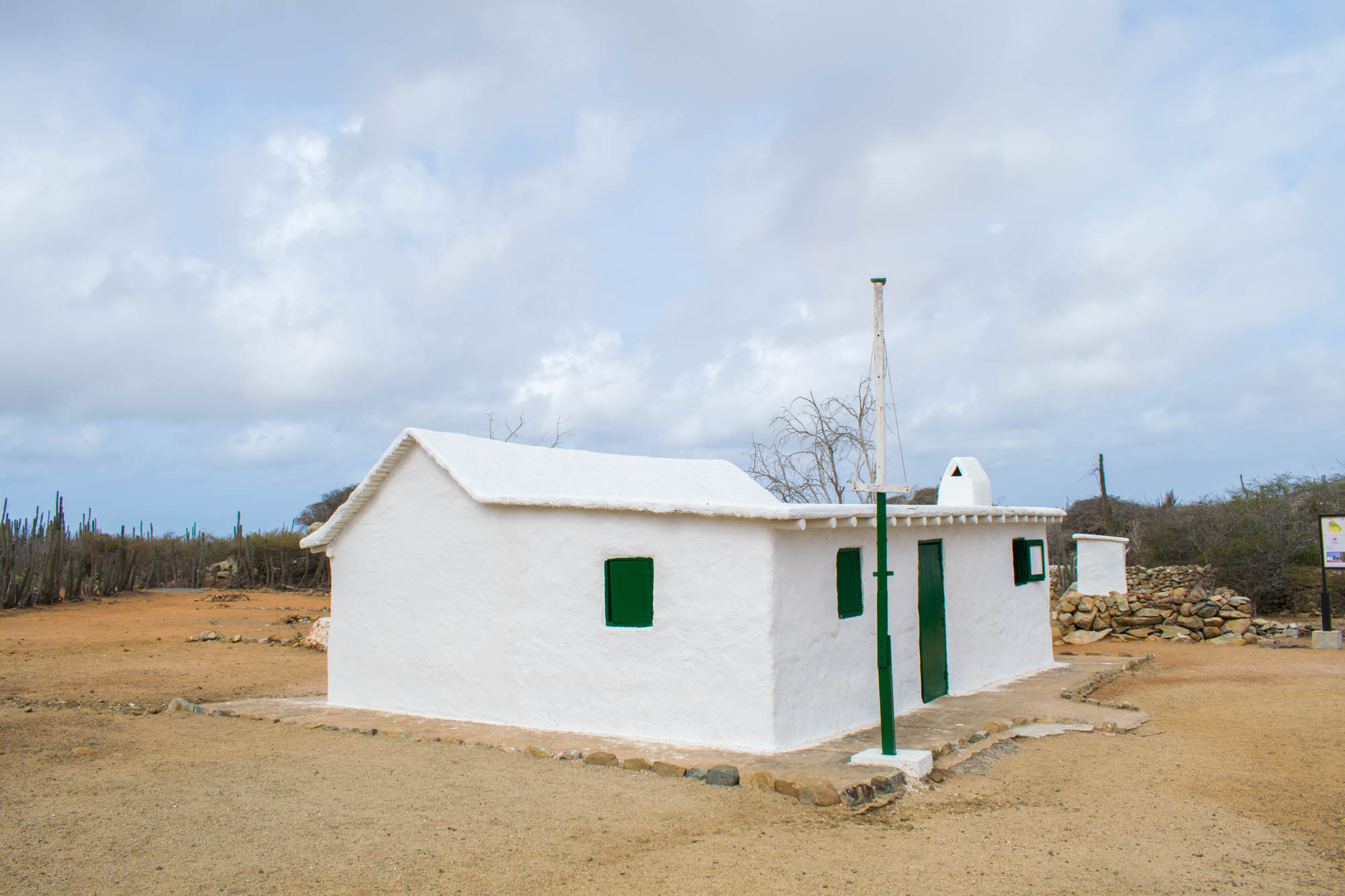
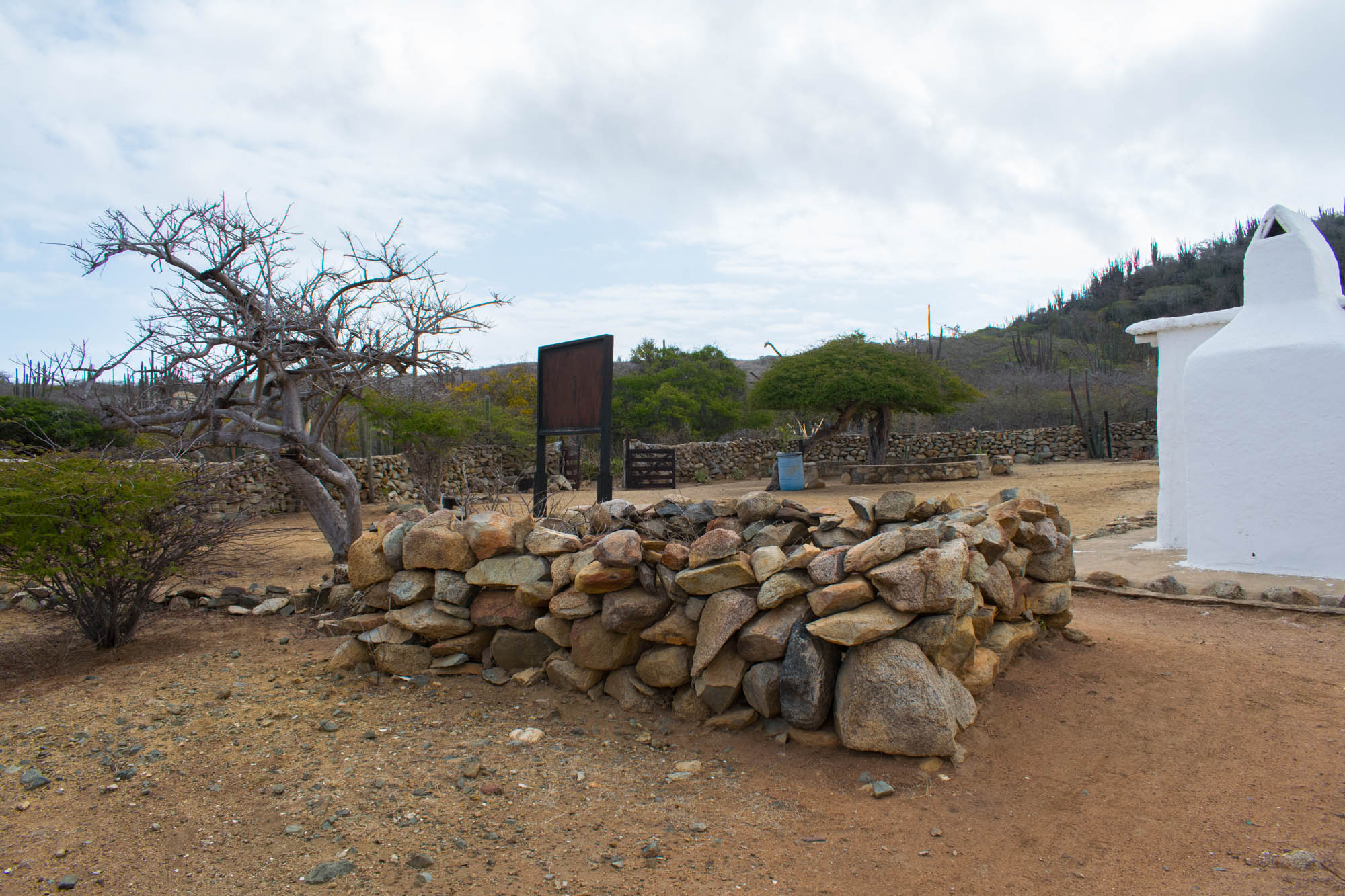
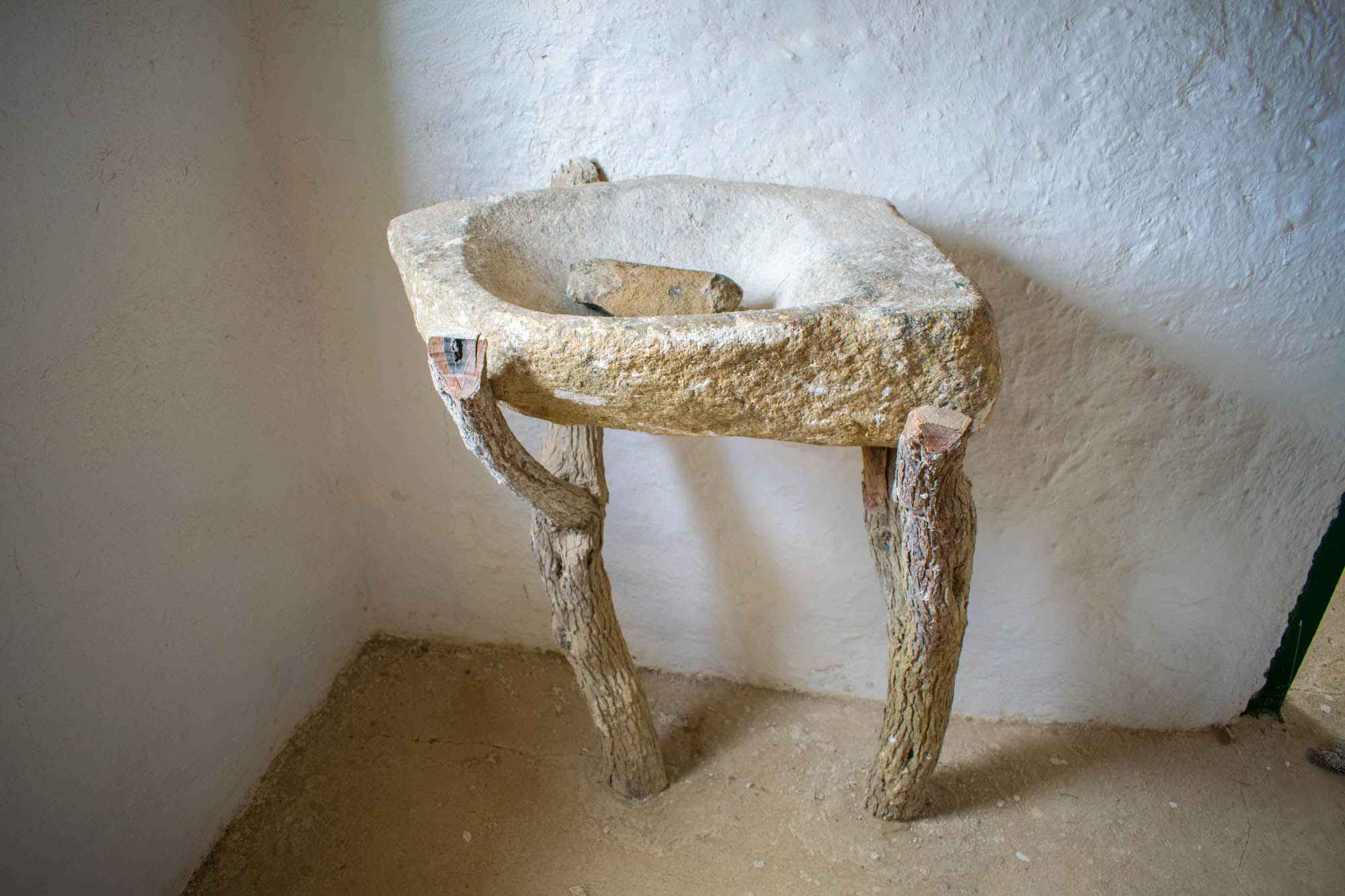
The Caquetíos Cave Paintings
During our hike in Canucu Arikok, my guide took our group to a hidden cave. Located off the main path, the cave was barely visible between the round cliffs and the large boulders nearby. Although the entrance was protected by a metal fence, I could clearly see what my guide wanted to show us – the remnants of cave paintings made by the Caquetío tribe. This tribe lived on Aruba from around 2500 BC, and the paintings have been dated back to the year 1000. Although slightly faded, the paintings were still clear as day.
The motifs contained glimpses of the tribe’s everyday lives, including fishing, hunting and basic agriculture. In fact, the logo for Arikok National Park is a painting of a bird stemming from this very cave.
The Caquetío tribe still lived on Aruba when the Spanish explorers arrived in 1499.
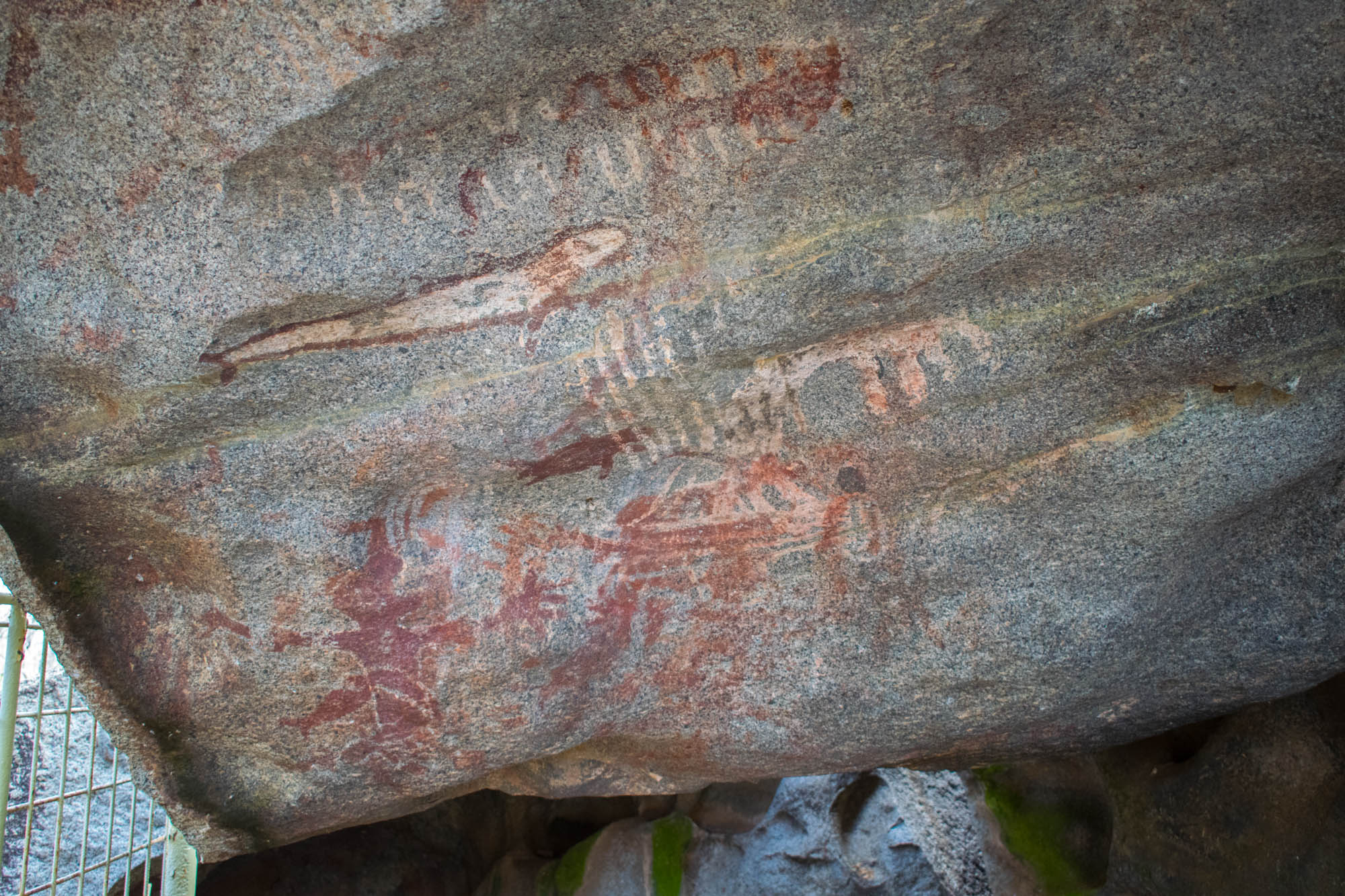
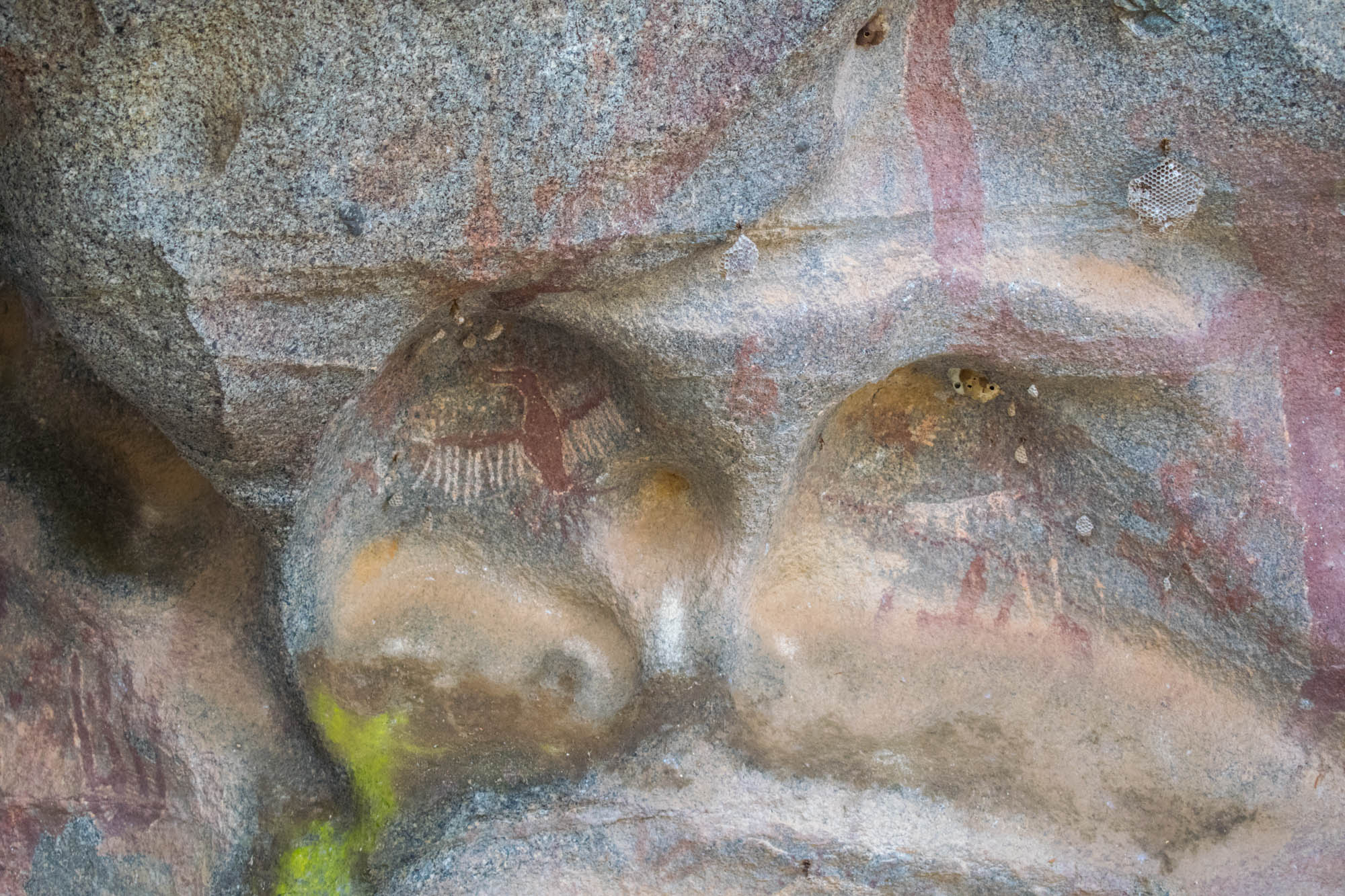
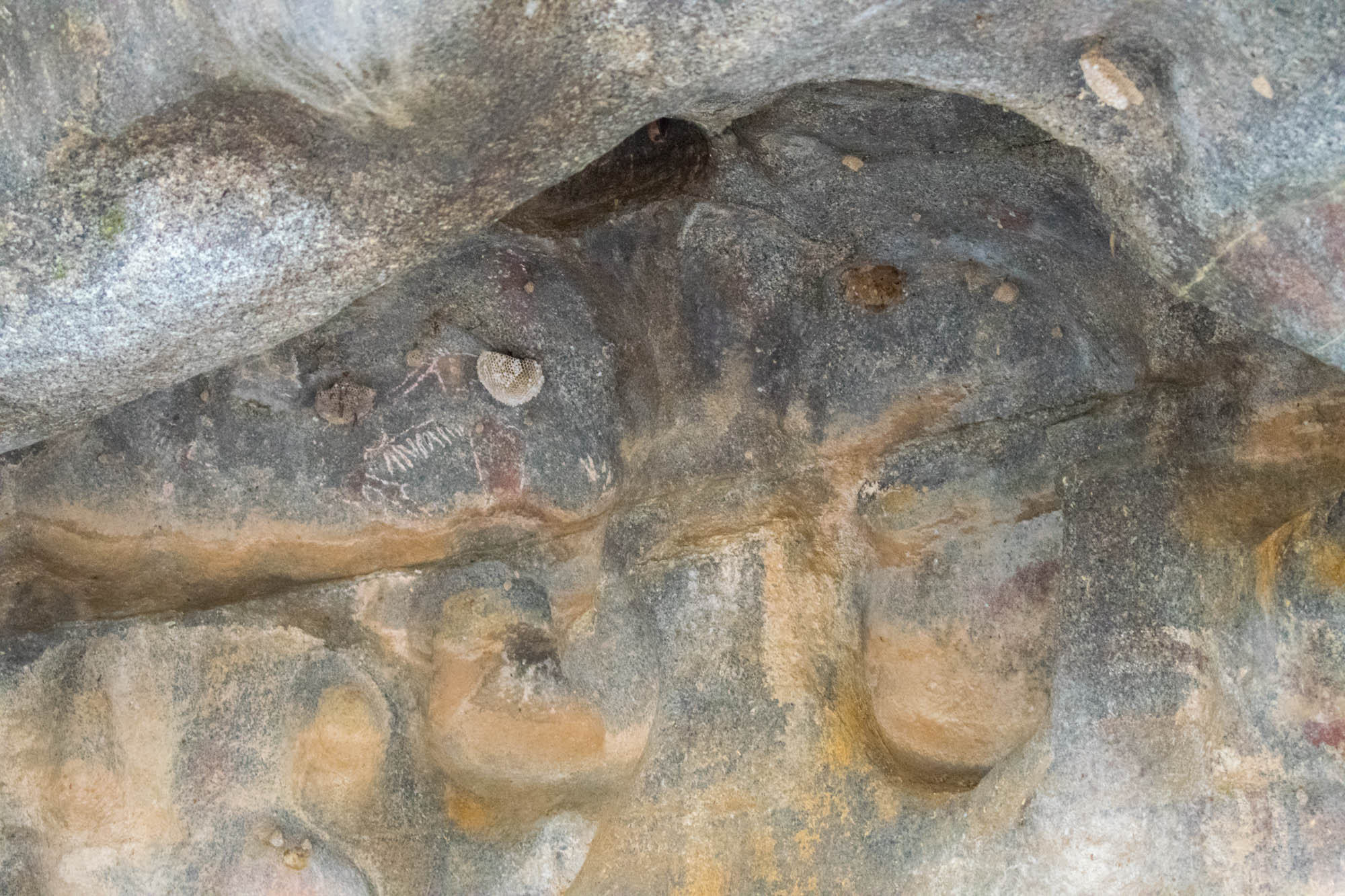
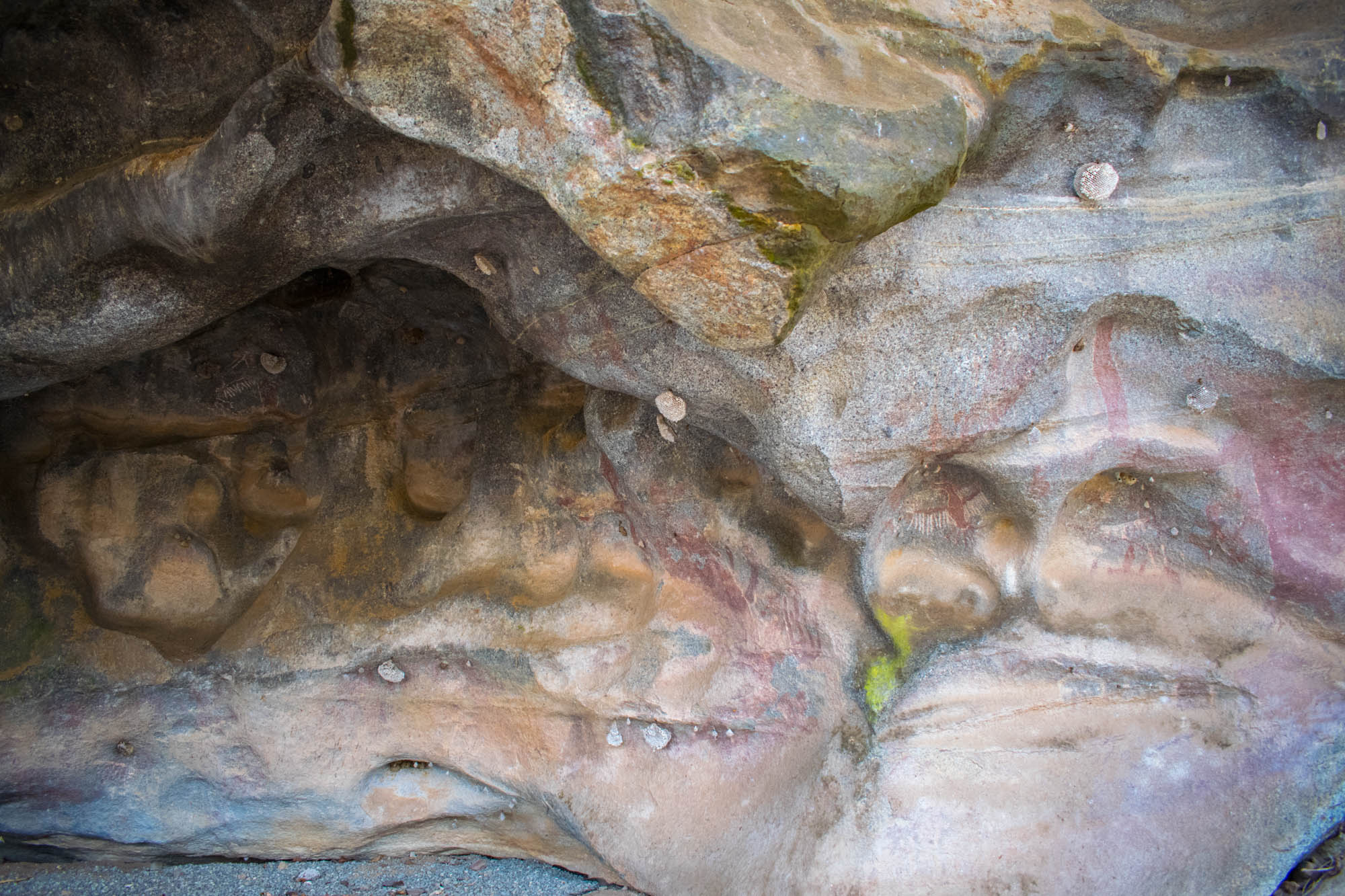
Remember Hiking Boots, Water and SPF when Hiking in Arikok National Park
As we were hiking through the dry desert landscape, I asked my guide what to be careful of when hiking on the many available paths. Although there is a poisonous rattlesnake in the area, this was far from his main concern. You see, the rattlesnake is not an aggressive type, unless its under threat, and the snake is actually close to extinction: at the time of writing, there is only 250 adult snakes left on the island.
The main concern is the lack of water. Plenty of tourists underestimate how much water they will need on a day trip – and, as the day goes on, they become more and more dehydrated. My guide also mentioned how the lack of strong SPF often resulted in severe sun burns after a long day out in the baking sunshine. In other words, if you’re visiting the national park it’s essential that you bring proper hiking boots, enough water and a strong SPF. Better safe than sorry, right?
After an eventful hike, we returned to the visitor centre and thanked our guide for the tour. While he was setting out with another group, we were going to discover another part of the national park – by car.
The roads in Arikok National Park are most suitable for 4×4 vehicles, but you can get by with a standard vehicle in most places. However, the roads are narrow and there are plenty of deep holes in the road, so watch out!
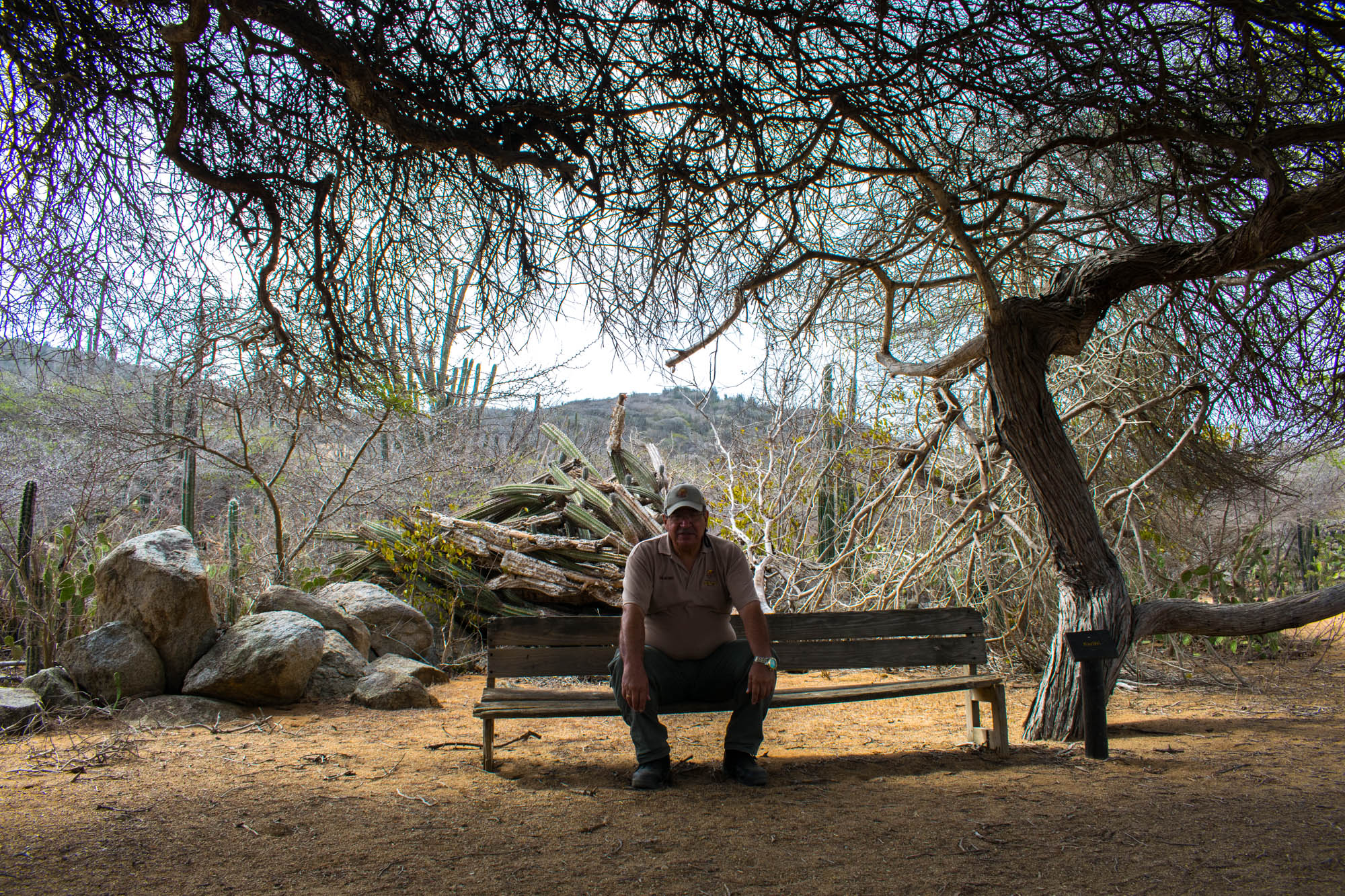
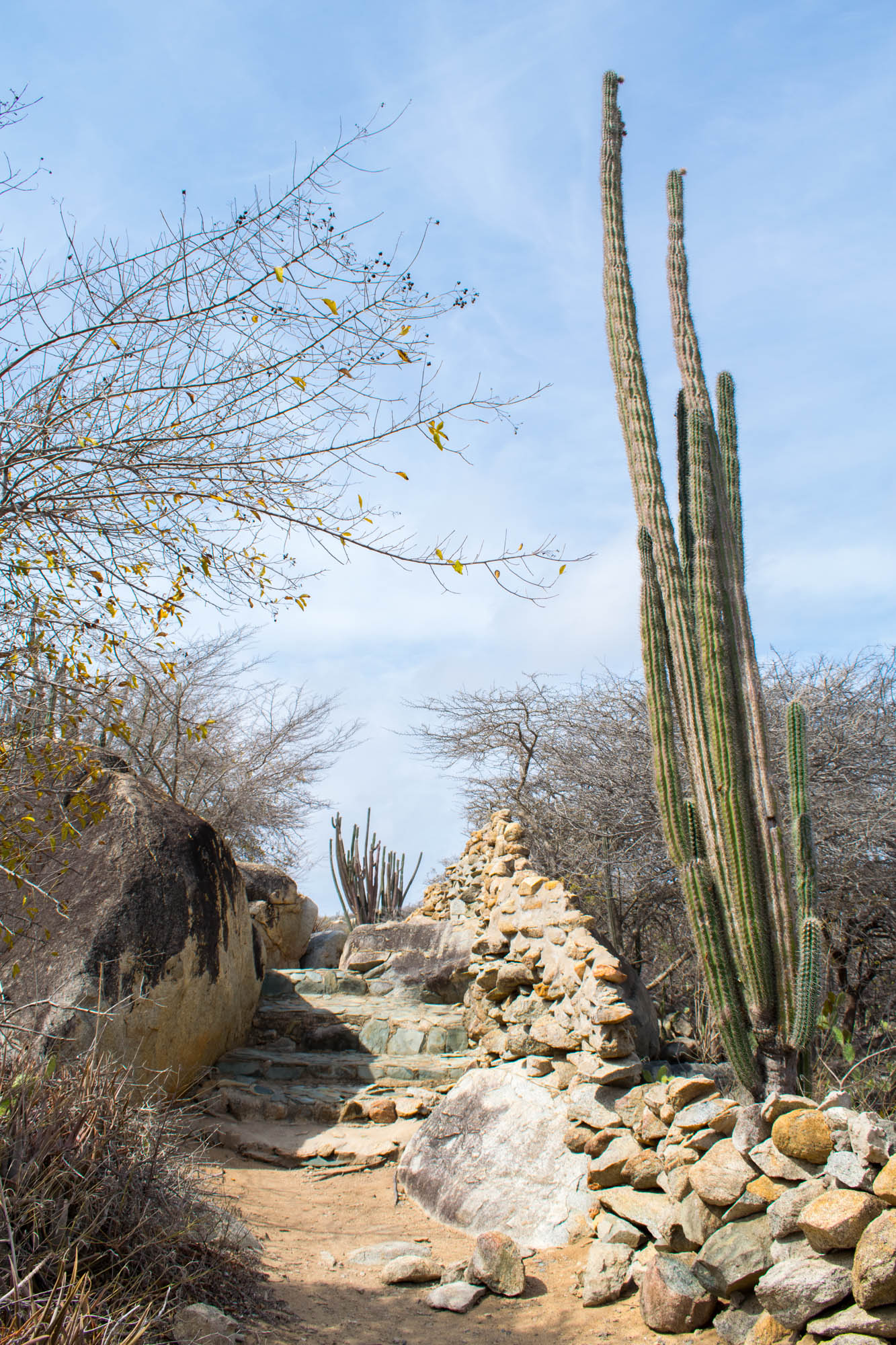
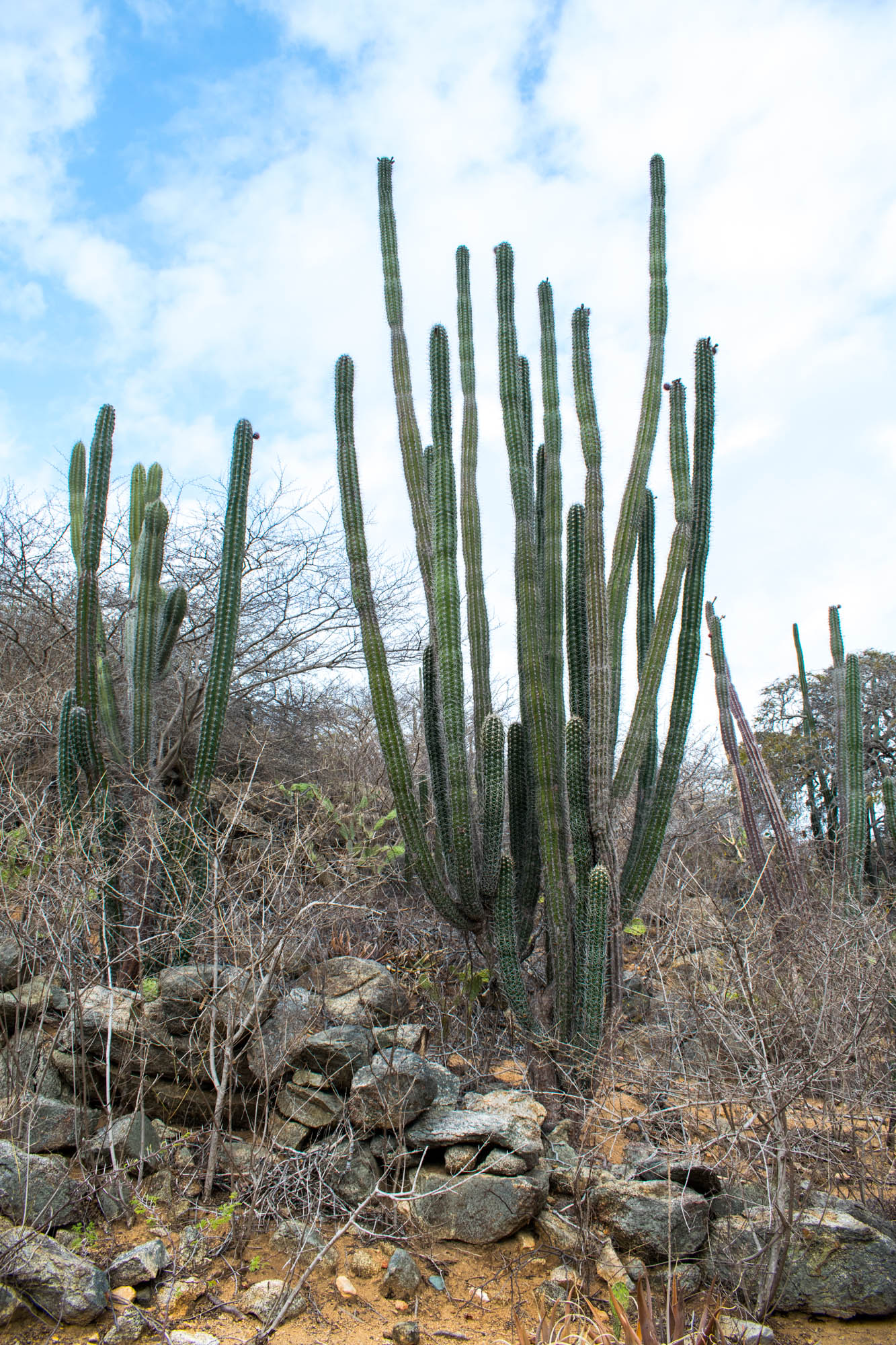
Discovering More Cave Paintings in the Fontein Cave
After a stunning drive through the park, we reached the ragged coast and its plethora of hidden caves. The first cave on our list, the Fontein Cave, is the most popular of all the chalk caves in the national park, and this too offers a few visible traces of the Caquetío tribe.
Here, the cave paintings are draped across the ceiling, revealing mysterious red symbols and animal figures. On the walls, you can find graffiti added by the early European settlers. The paintings reveal that the cave was most likely used by the tribe for ritual ceremonies and gatherings – and perhaps even as a place where they would hide whenever someone attacked the island?
While we walked around the cave, one of the local guides came over and asked if he could show me something. He pointed his flashlight further into the cave, and I could suddenly see two bright blue crabs, all snuggled together and hiding from the light.
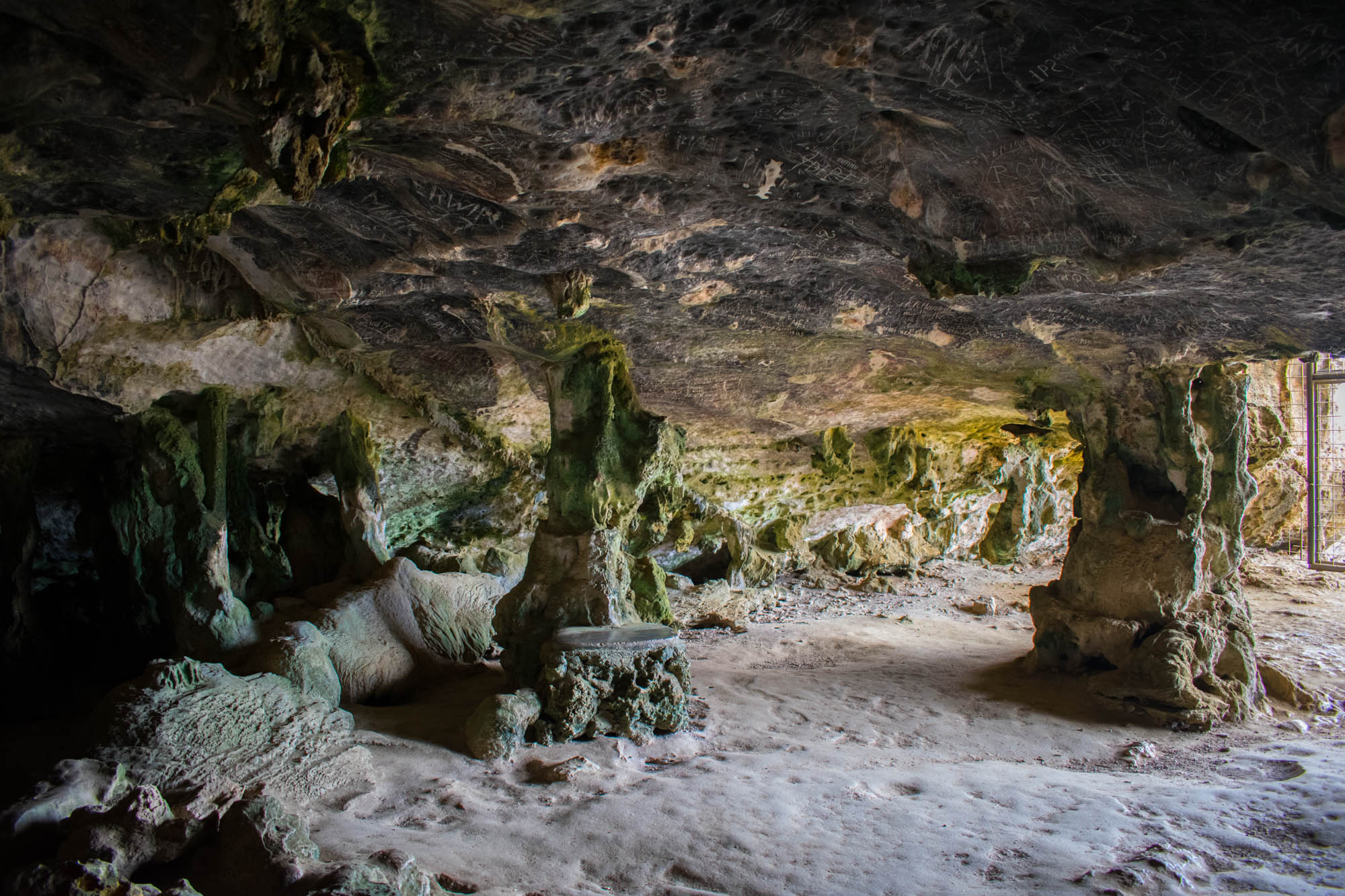
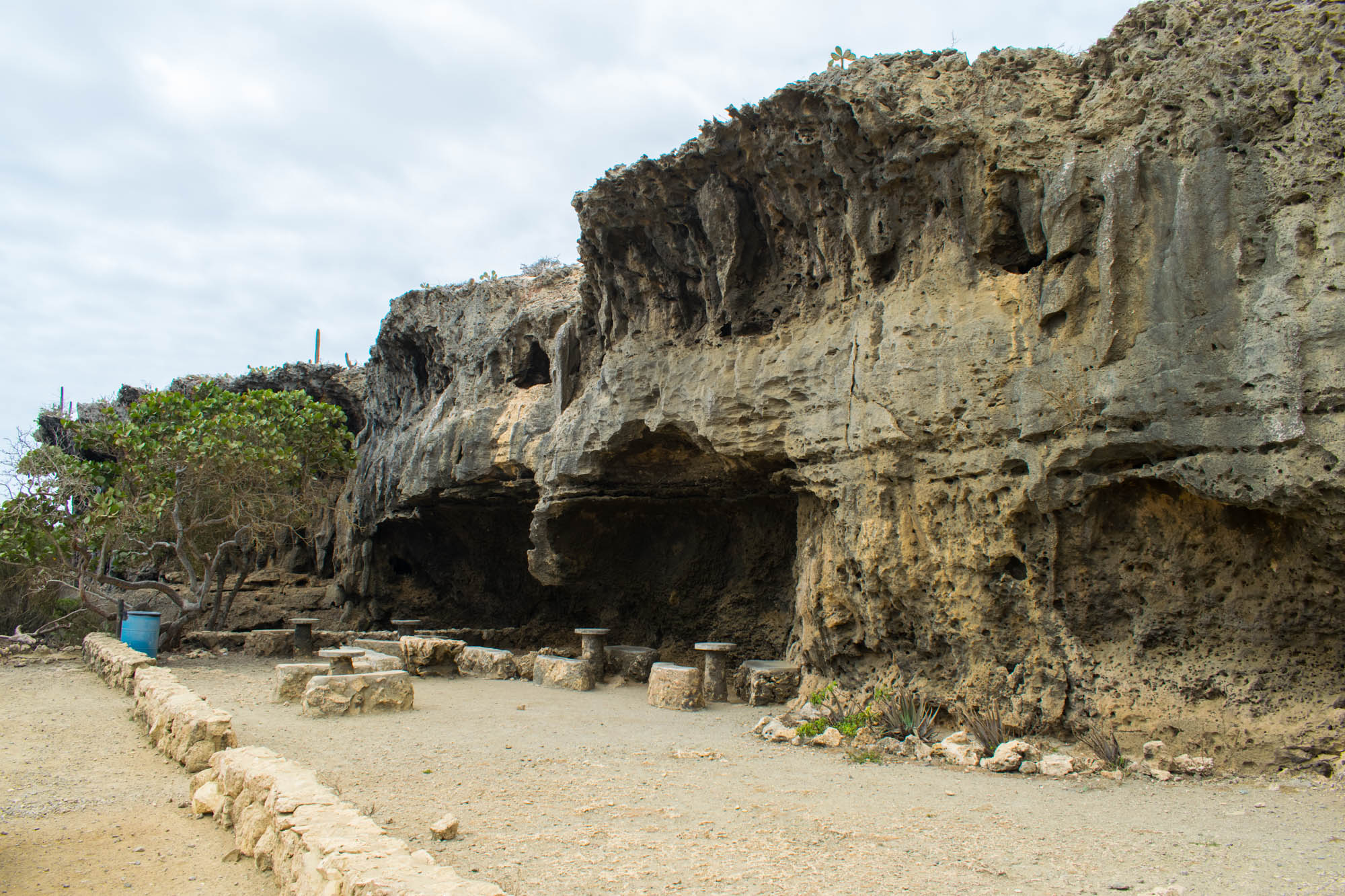
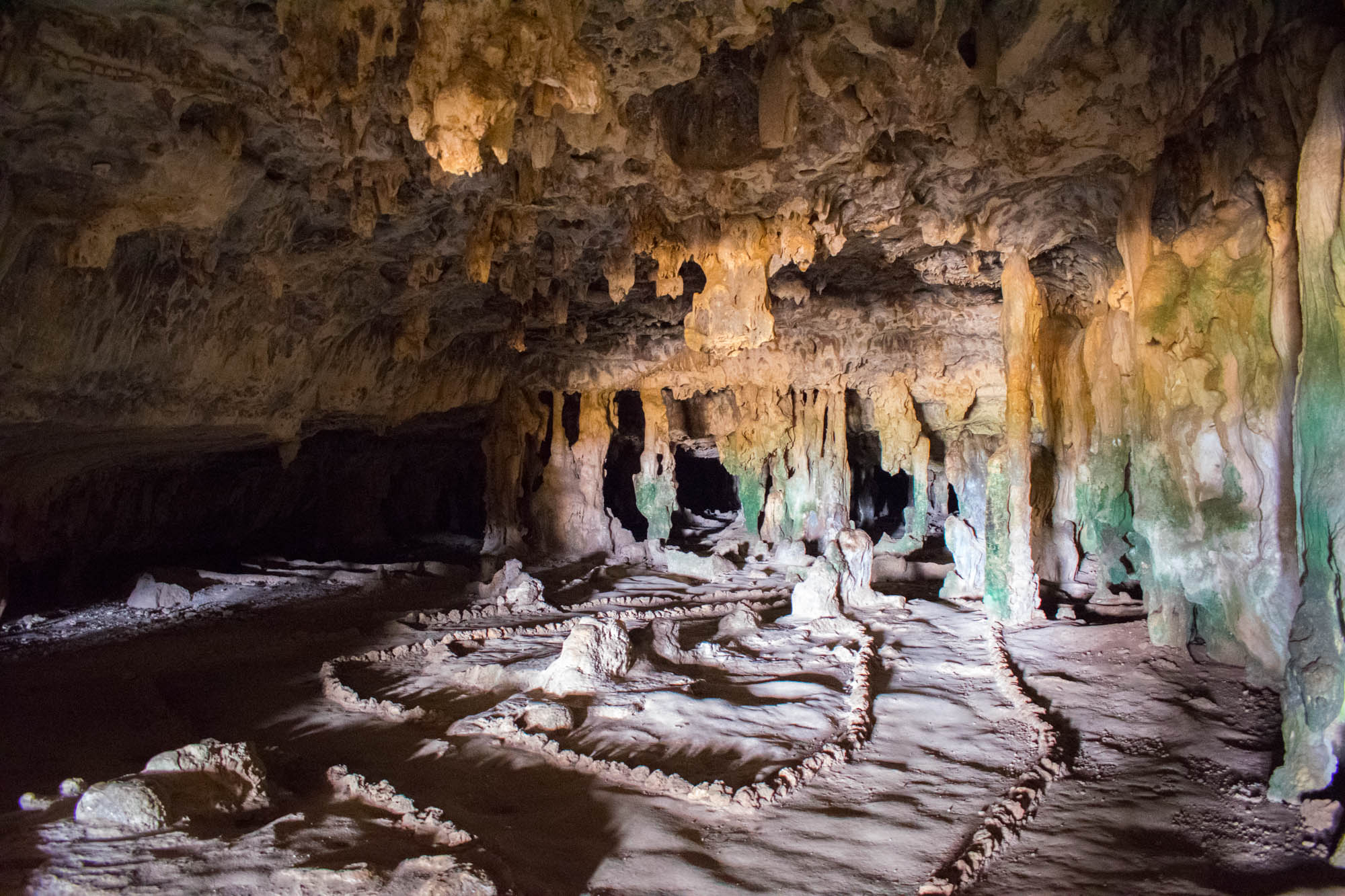
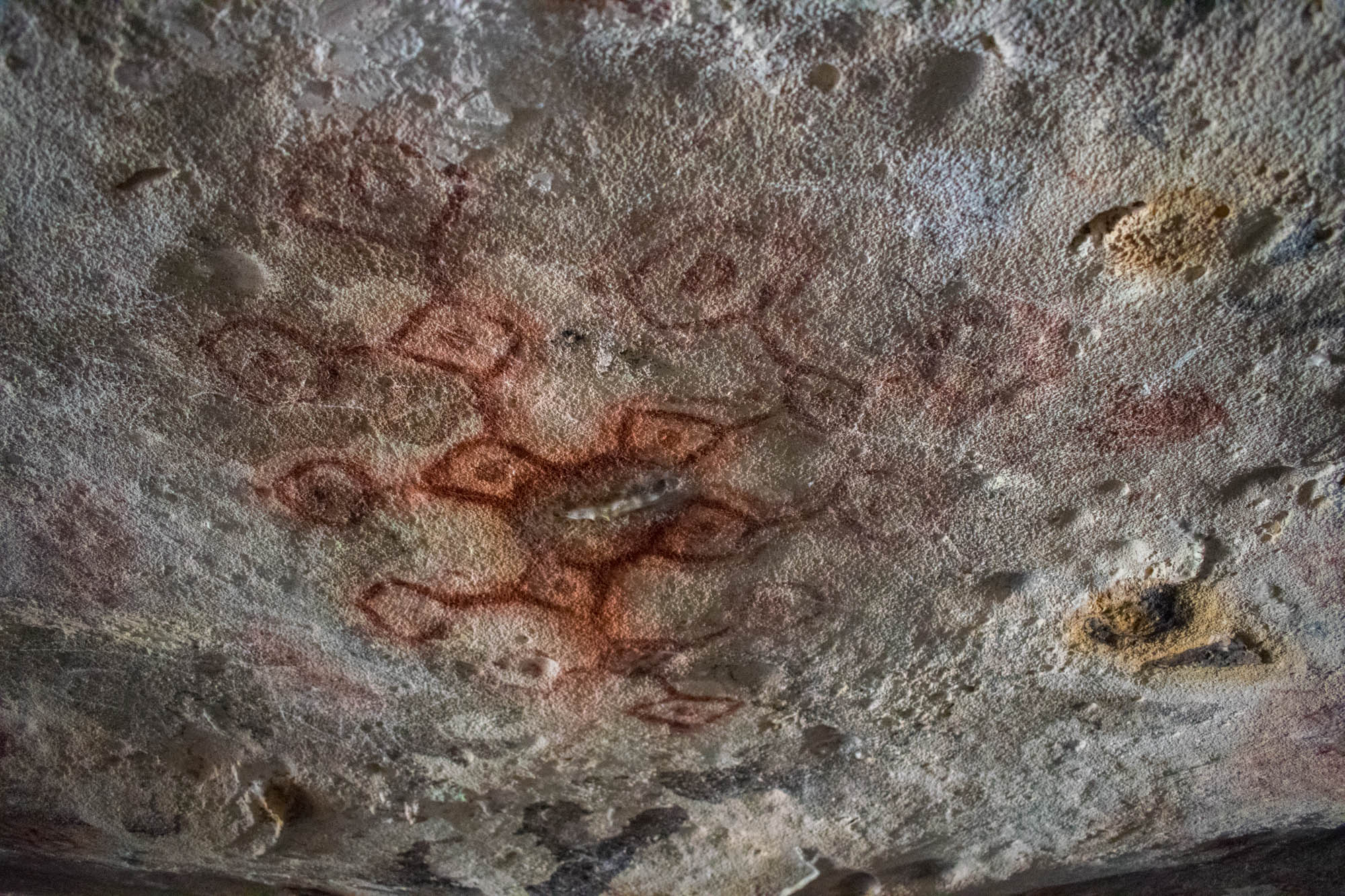
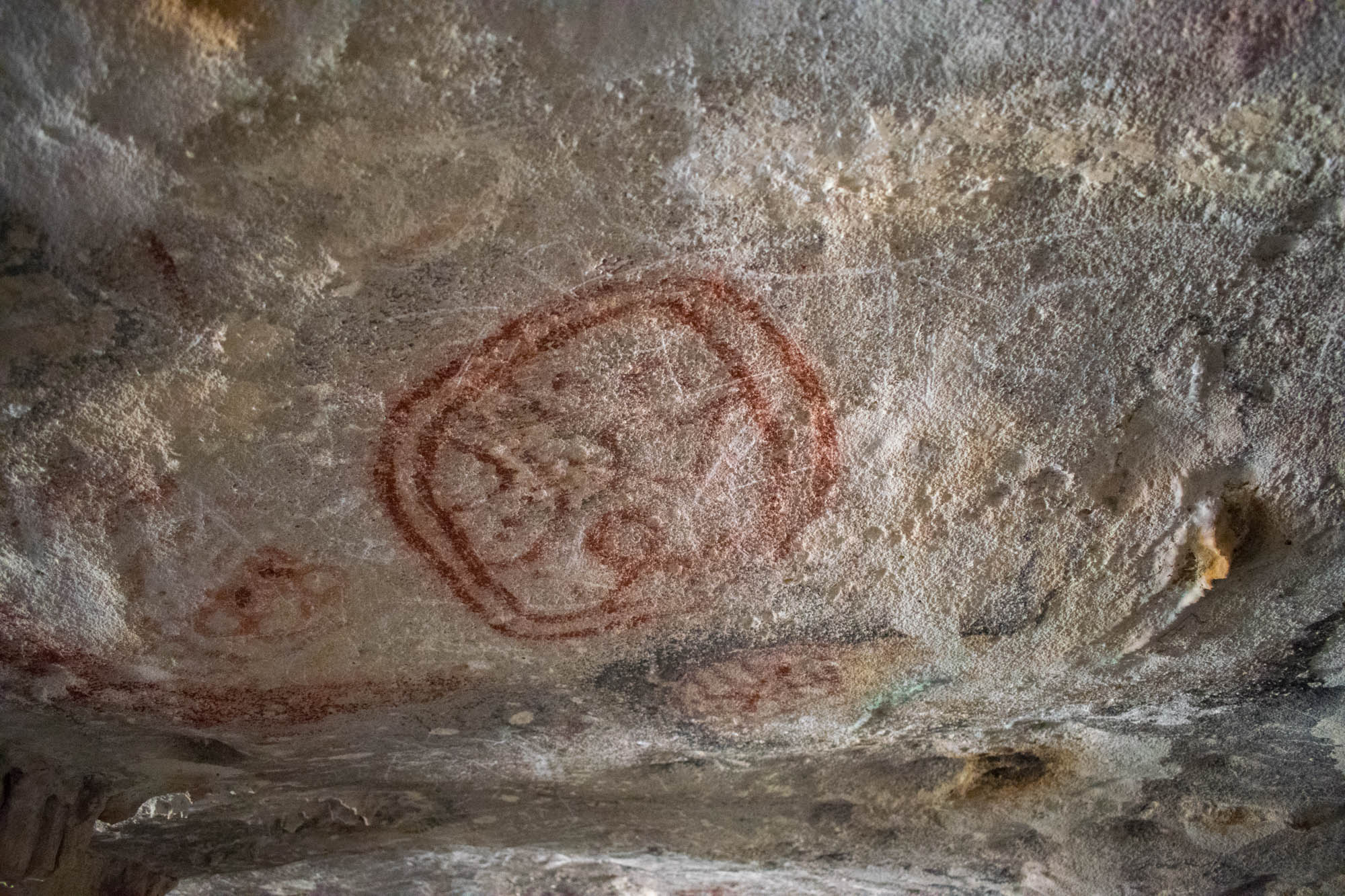
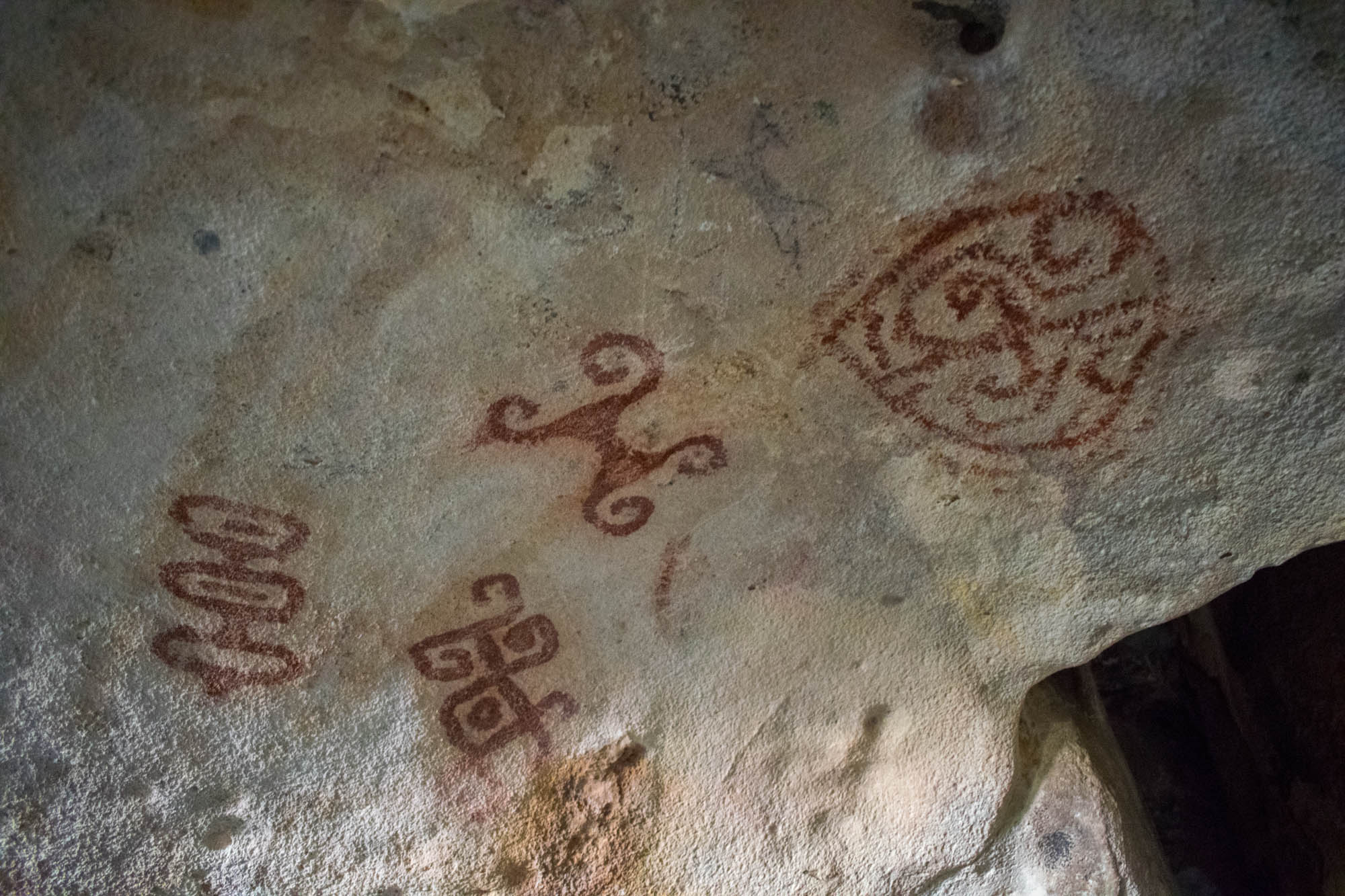
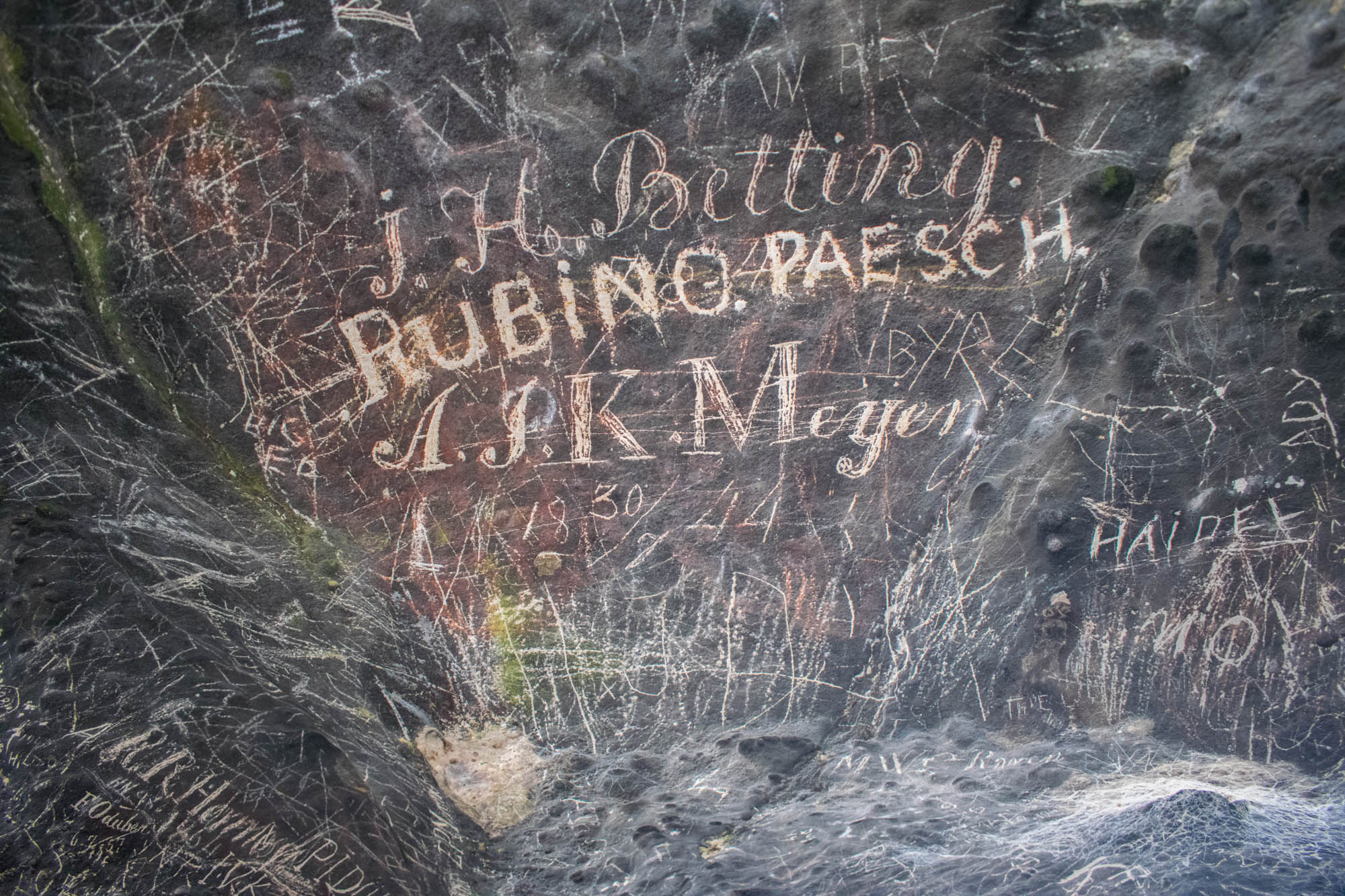
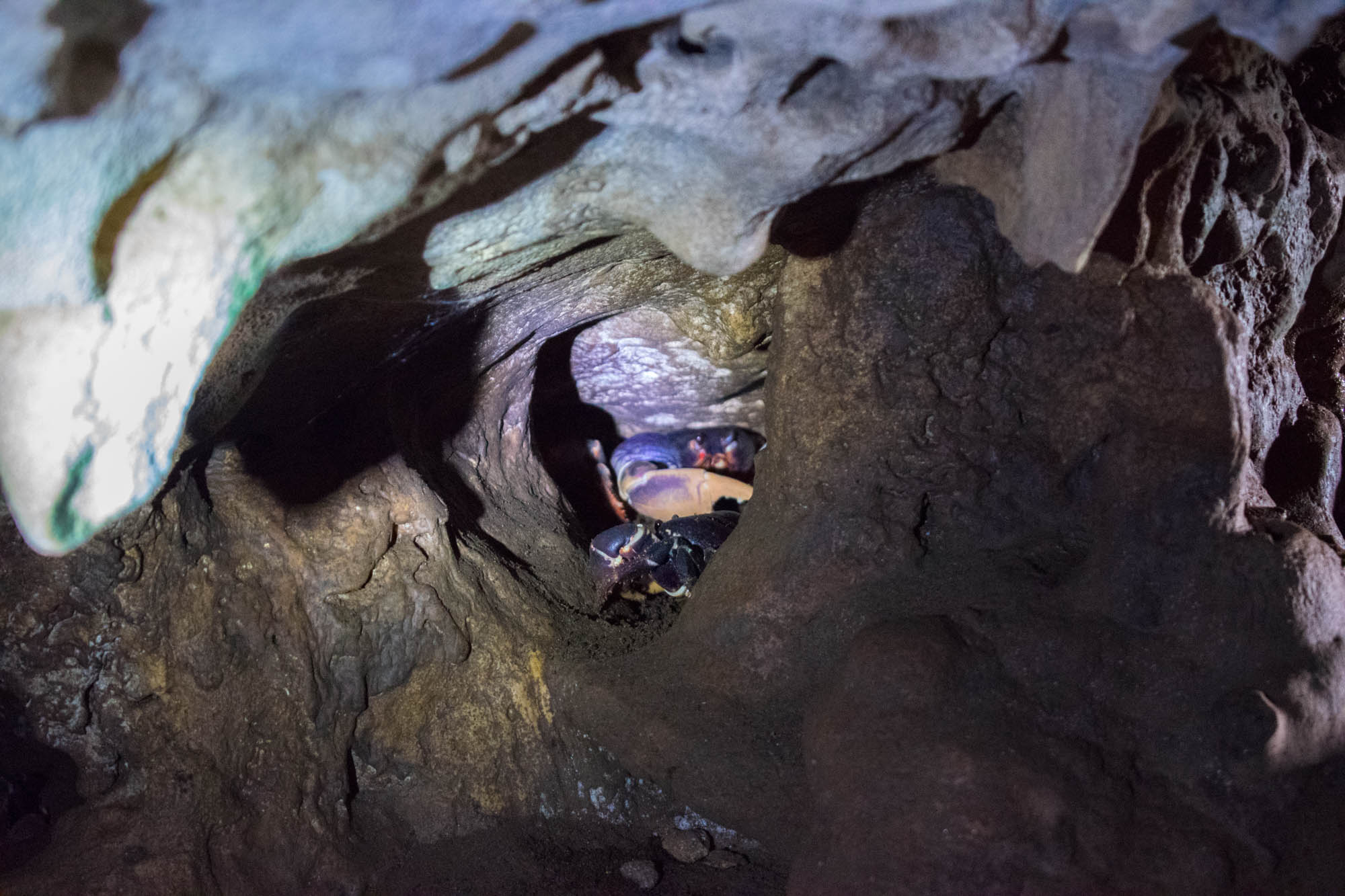
Natural Spotlight in the Quadirikiri Cave
Our next stop was a different type of cave – the Quadirikiri cave. While you can get guided tours in the Fontein cave, the Quadirikiri cave forbids the use of flashlights. You must also be as quiet as possible, so that you don’t disturb the many bats living there.
We crept through the darkness, with bats flying over our heads, and without making a sound. After a few minutes in total darkness, we had reached our destination: the cave was suddenly filled with the most wonderful red light! A small opening in the ceiling allowed a little sunlight to get into the cave. The sunshine hit like a spotlight, and created a fantastic sight and a great photo opportunity.
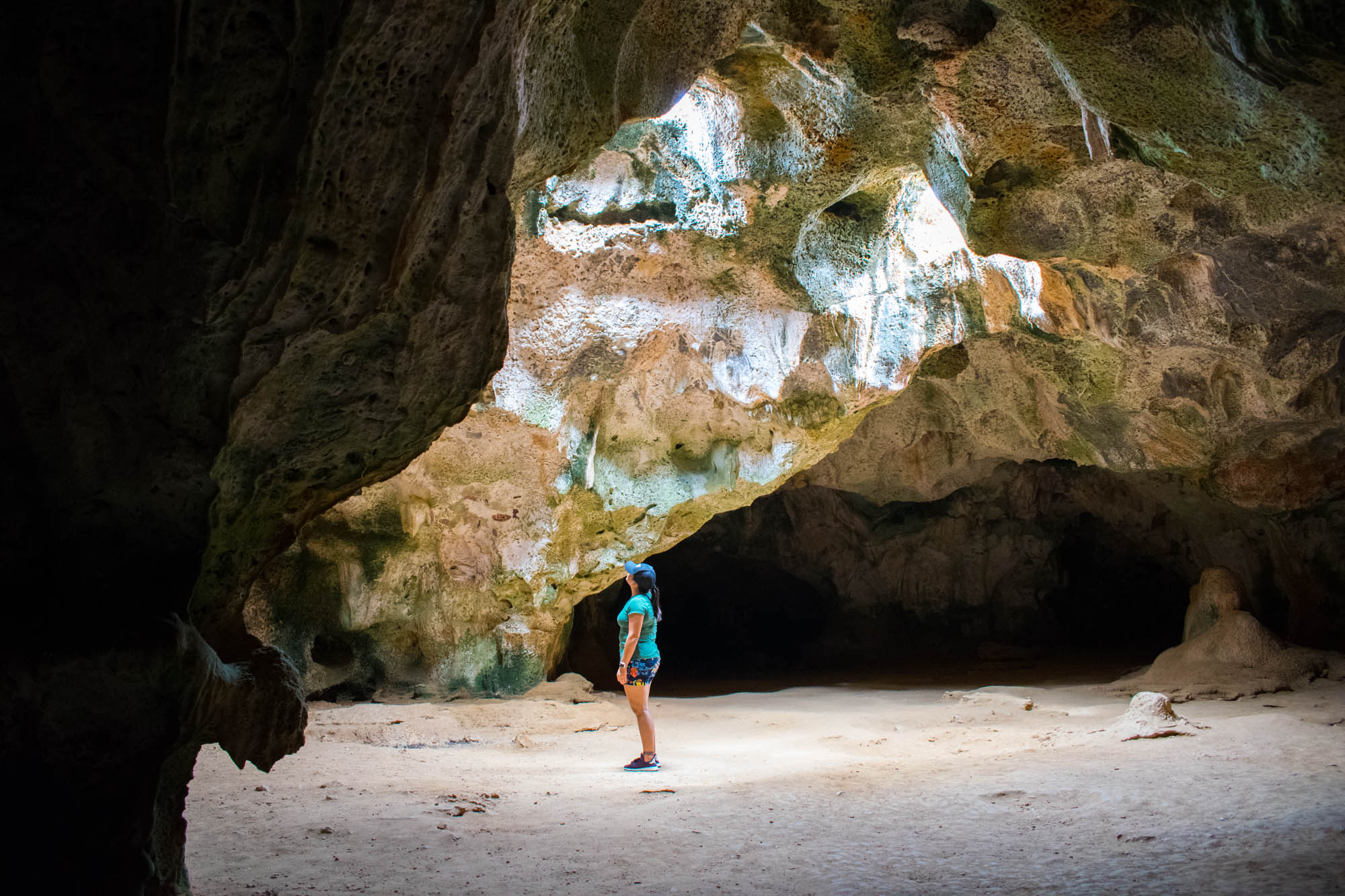
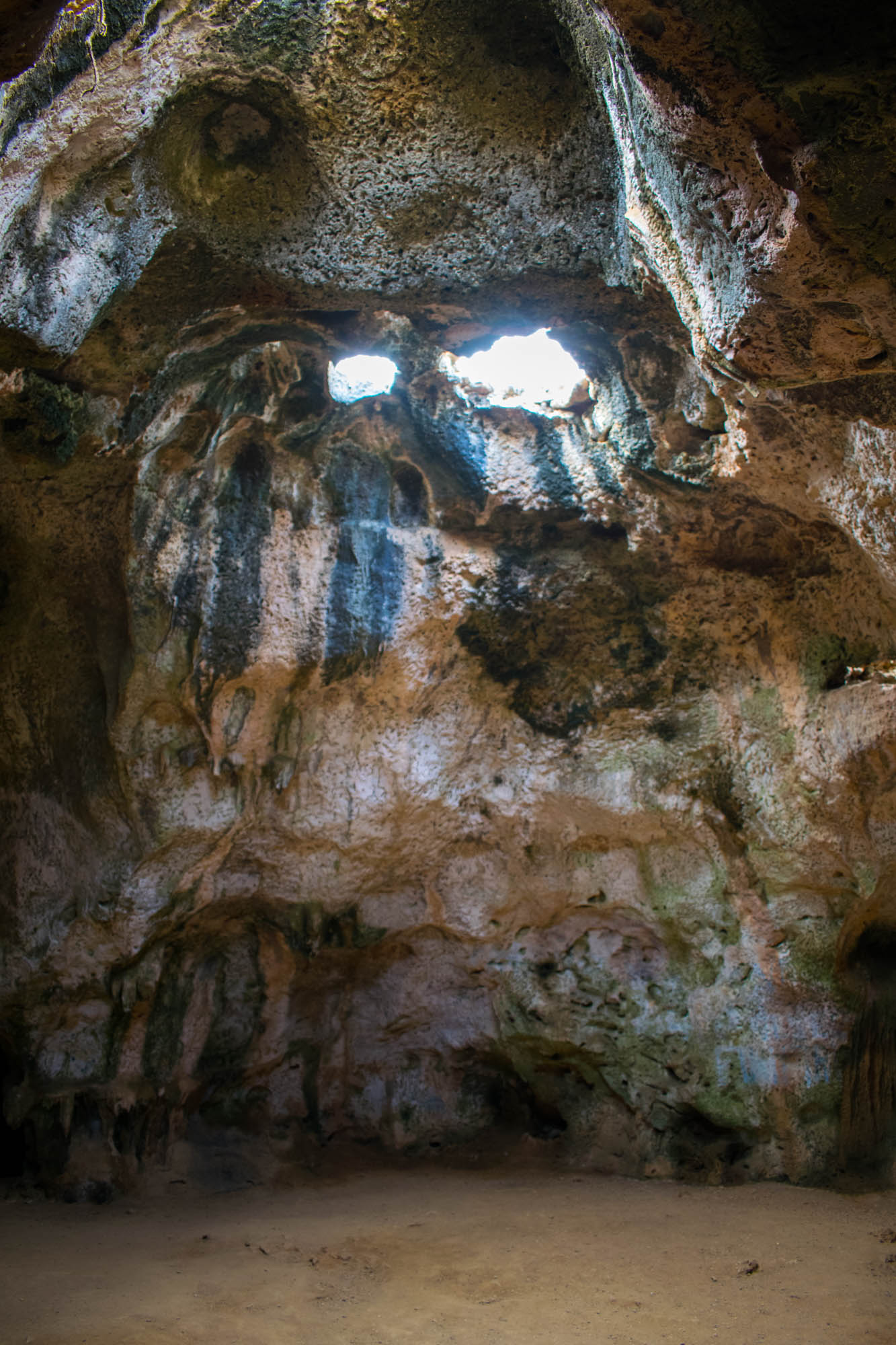
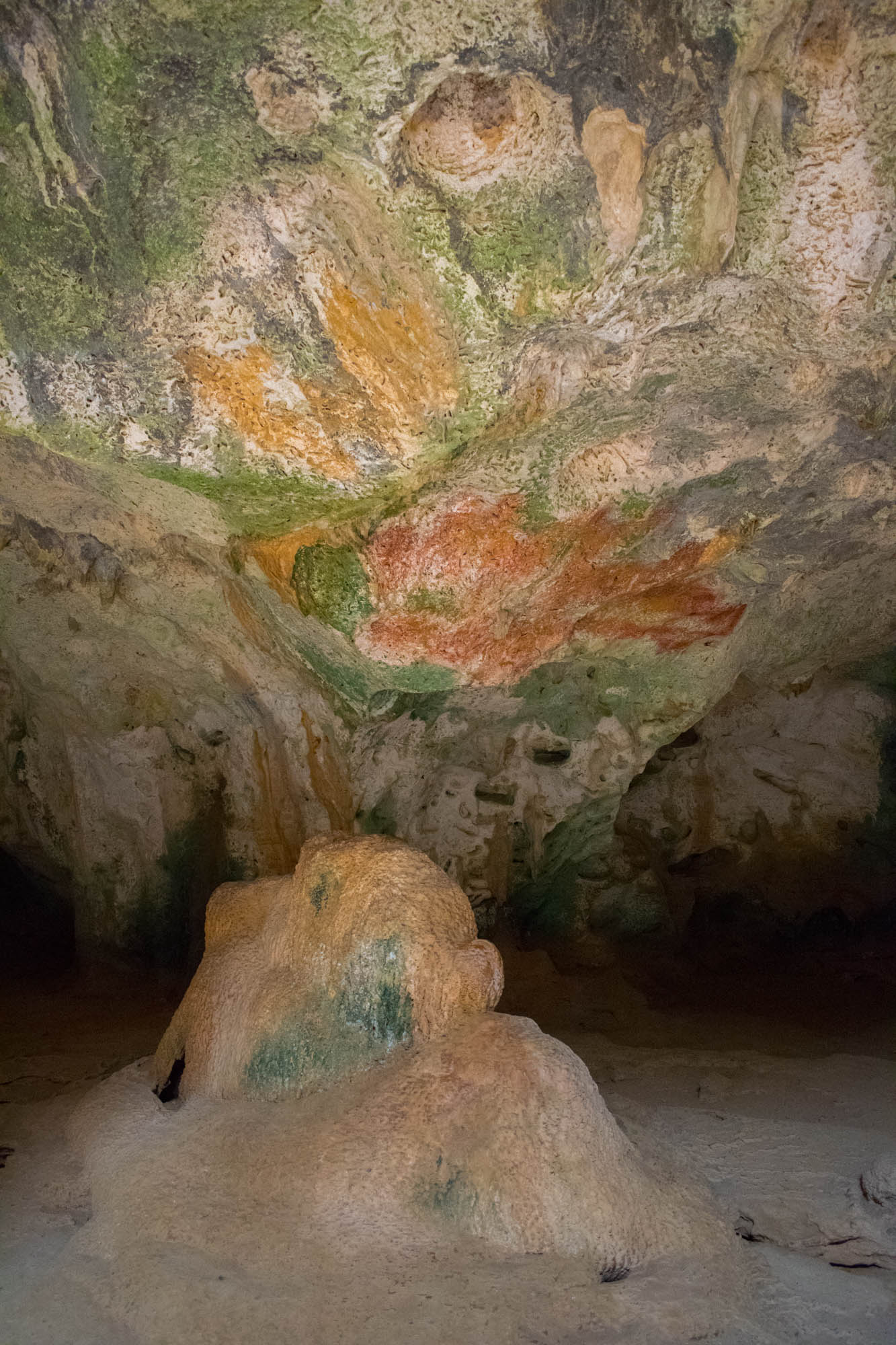
Visiting Arikok National Park in Aruba
The national park is open every day from 8 to 4, and the caves are open from 8 to 3.30. The cost of a ticket is approximately 11 USD per person.
If you’re spending time in the park, there are quite a few rules that must be followed. For example, you’re only allowed to drive on the main roads (these are clearly marked), and under no circumstance are you allowed to drive on the sand dunes or on the beaches. You must also park in the designated places, and the speed limit is 20 km per hour.
It’s absolutely imperative that you respect the landscape and the local wildlife. Keep your voice down, and don’t throw away any trash in nature. As in most national parks, you are encouraged to observe, not disturb, the local wildlife.
And the official slogan of Arikok National Park? Take nothing but photos and leave nothing but footprints. Words to live by, if you ask me.
The journey to Aruba was done as a collaboration with NordicTB, KLM and Aruba Tourism to promote toff the beaten path locations and hidden gems in Aruba. The project was called #NordicTB in Aruba. All opinions are as always my own.

